Crochet sweaters don’t have to be intimidating! Beginners and experienced makers alike will find something to love in this collection of free sweater and cardigan patterns.
Each of these modern cardigans, pullovers, hoodies and shrugs requires very little shaping so you can confidently tackle your first (or 50th!) crochet garment.
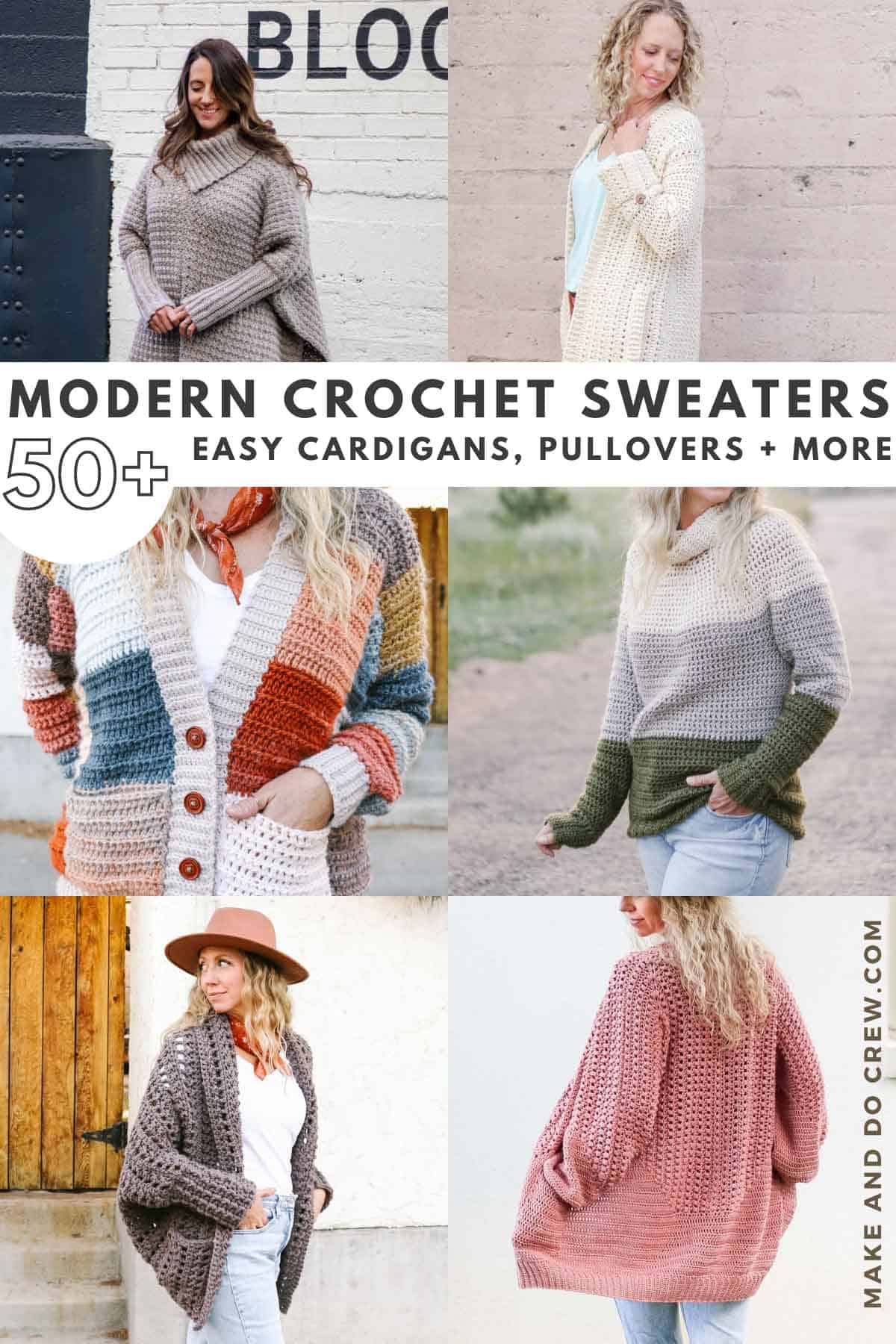
This guide to crochet sweaters and cardigans contains affiliate links.
Crochet Sweater and Cardigan Patterns
Many of the free patterns below require minimal shaping and include video tutorials, making them perfect beginner projects.
If you already know the style of sweater you’re looking for, click the link below to jump to that section.
- Easy Sweater Patterns for Beginners
- Cardigans
- Seamless Sweaters
- Pullover Sweaters + Sweatshirts
- Ponchos
- Shrugs
- Vests
- Kids sweater patterns
If you’re new to making garments, you’ll definitely want to check out our comprehensive sweater guide for beginners. Learn how to crochet a sweater, including my favorite tips and tricks that will guarantee sweater success.
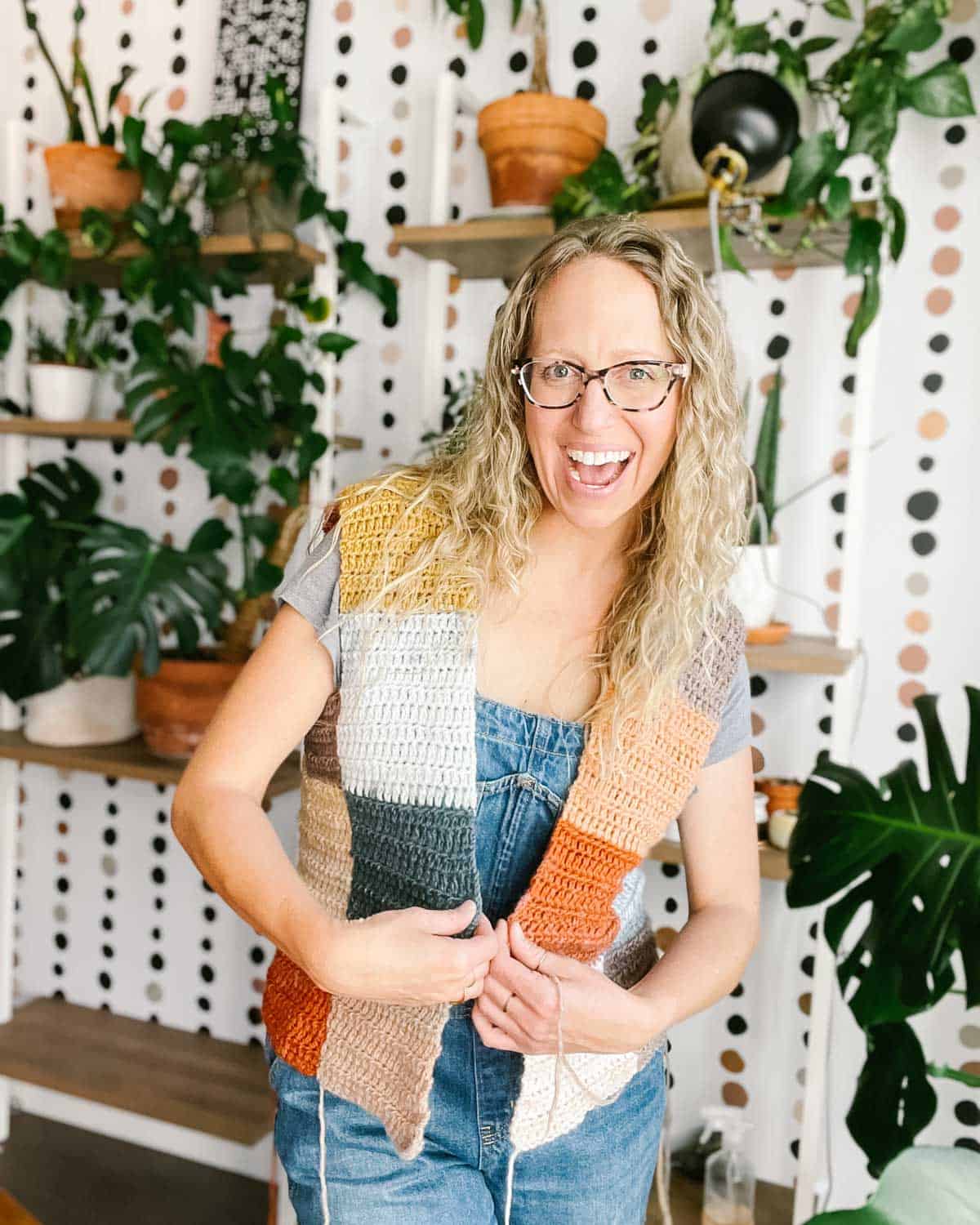
The Easiest Cardigans for Beginners
If you can make a washcloth or scarf, you already have most of the skills you need to complete these patterns. They have quick-to-memorize stitch patterns, minimal increasing and decreasing, little to no seaming, and simple shapes like rectangles.
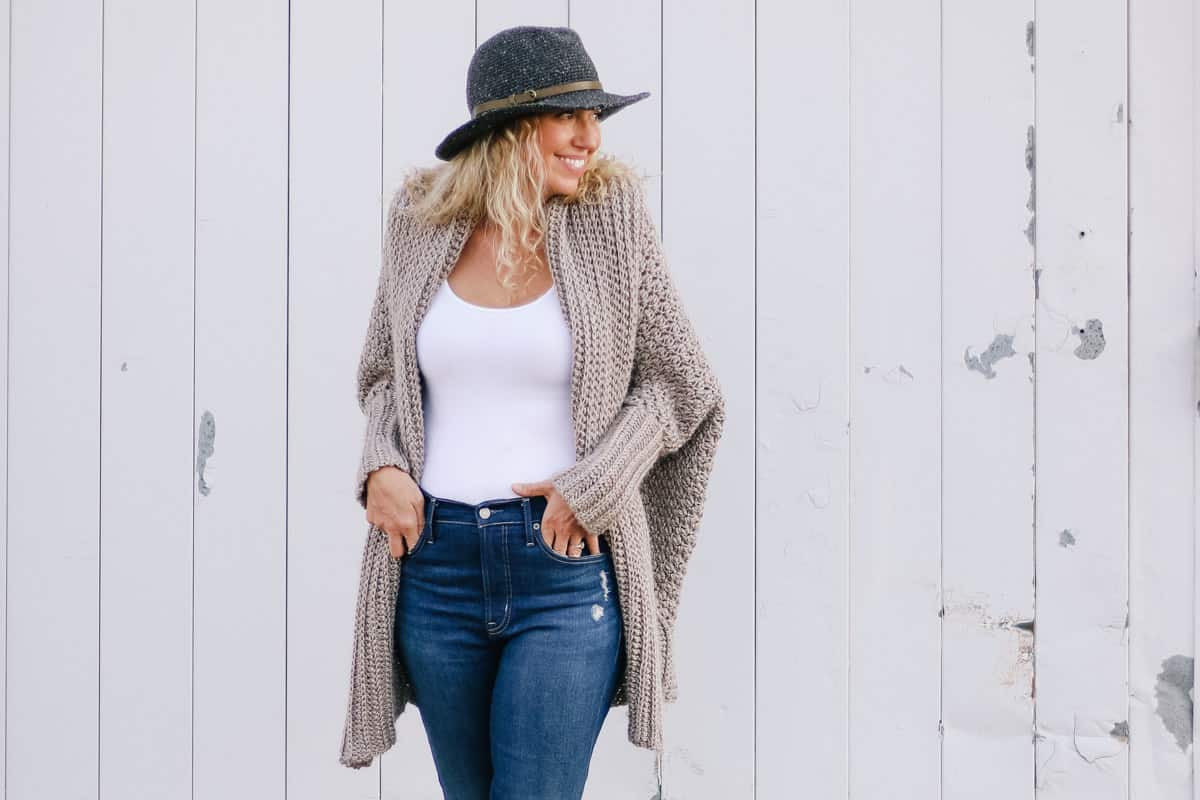
Habitat Sweater Made From Rectangles
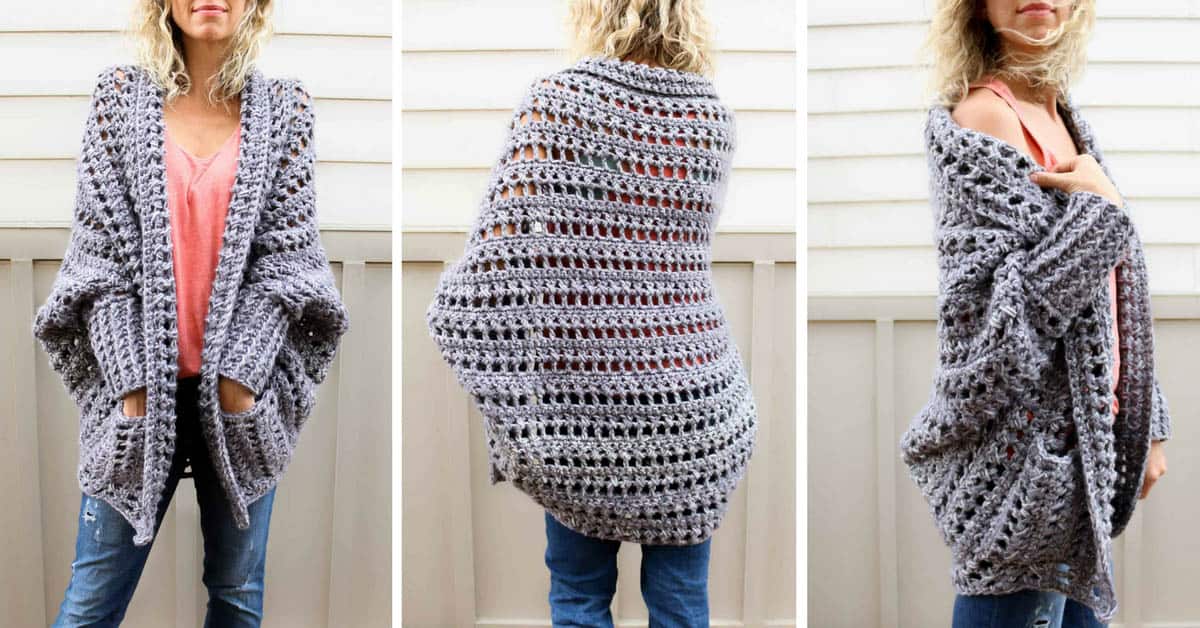
Dwell Chunky Cocoon Cardigan

Tired of crocheting garments that don’t fit?
Don’t spend hours for a “meh” result! Learn our C.R.A.F.T. Framework to make sweaters that fit and feel amazing!
Advanced-Beginner Sweaters
Ready to level up? Are you willing to take on a bit more seaming or shaping for the perfect sweater? You may be looking for an advanced-beginner pattern.
This kind of pattern may include some increasing or decreasing in the sleeves, as well as basic seaming. However, it’ll still be based on simple shapes like rectangles and hexagons and feature easy-to-memorize stitch patterns.
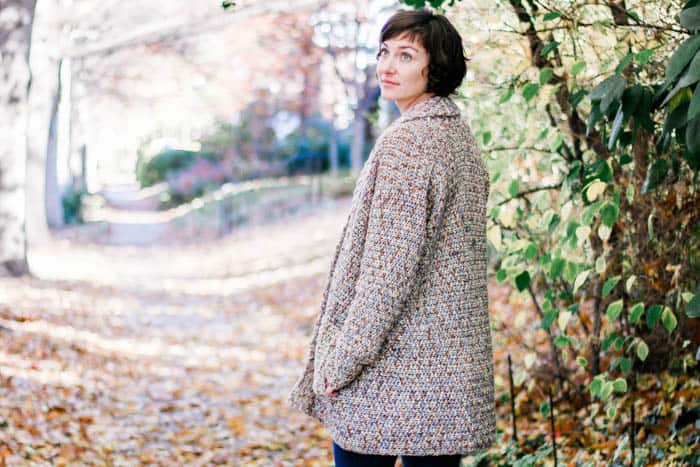
Up North Classic Cardigan

C2C Cardigan Made from Rectangles
Crochet Hexagon Cardigans
It’s hard to believe two humble hexagons can serve as the foundation for a gorgeous cardigan pattern. Using some creative geometry, these patterns come together with minimal seaming and loads of fun.
One thing I love about hexagon cardigans is that they allow you to try on the sweater as you go. This can be really helpful in adjusting the fit if you’re crocheting a cardigan for the first time.
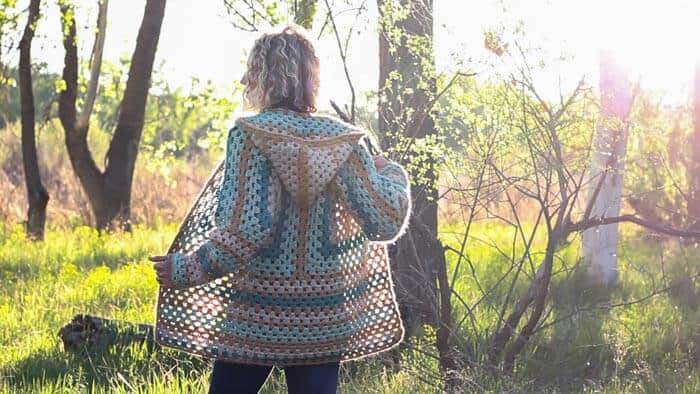
The Original Campfire Cardigan
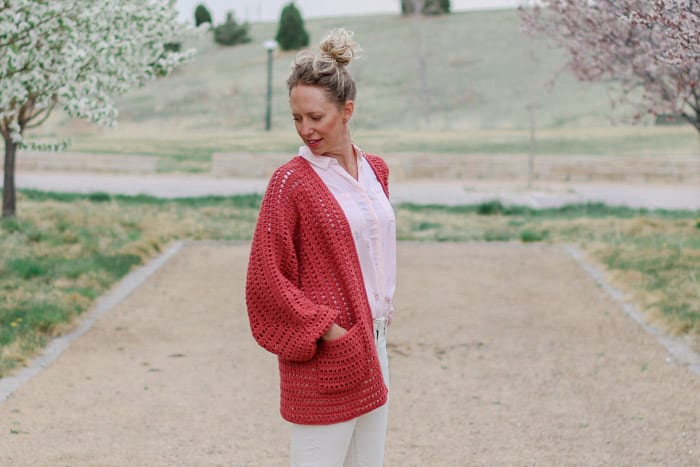
Day Date Cardigan
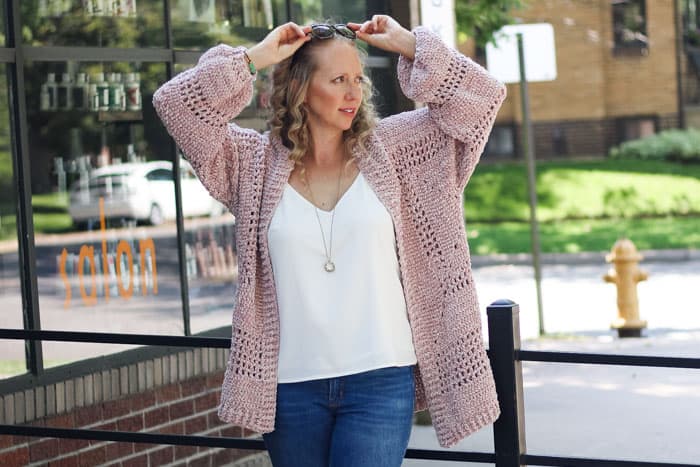
Comfy Oversized Cardigan
My Favorite Cardigan Patterns
Cardigans can be the perfect layering garment for many seasons. If you’re looking for a sweater you can wear most of the year, a cardigan is the way to go. Cardigans also happen to be my favorite type of garment to design because the styles can vary so much.
From dolman sleeves and bobble stitches to granny squares, you’ll find a little of everything here.
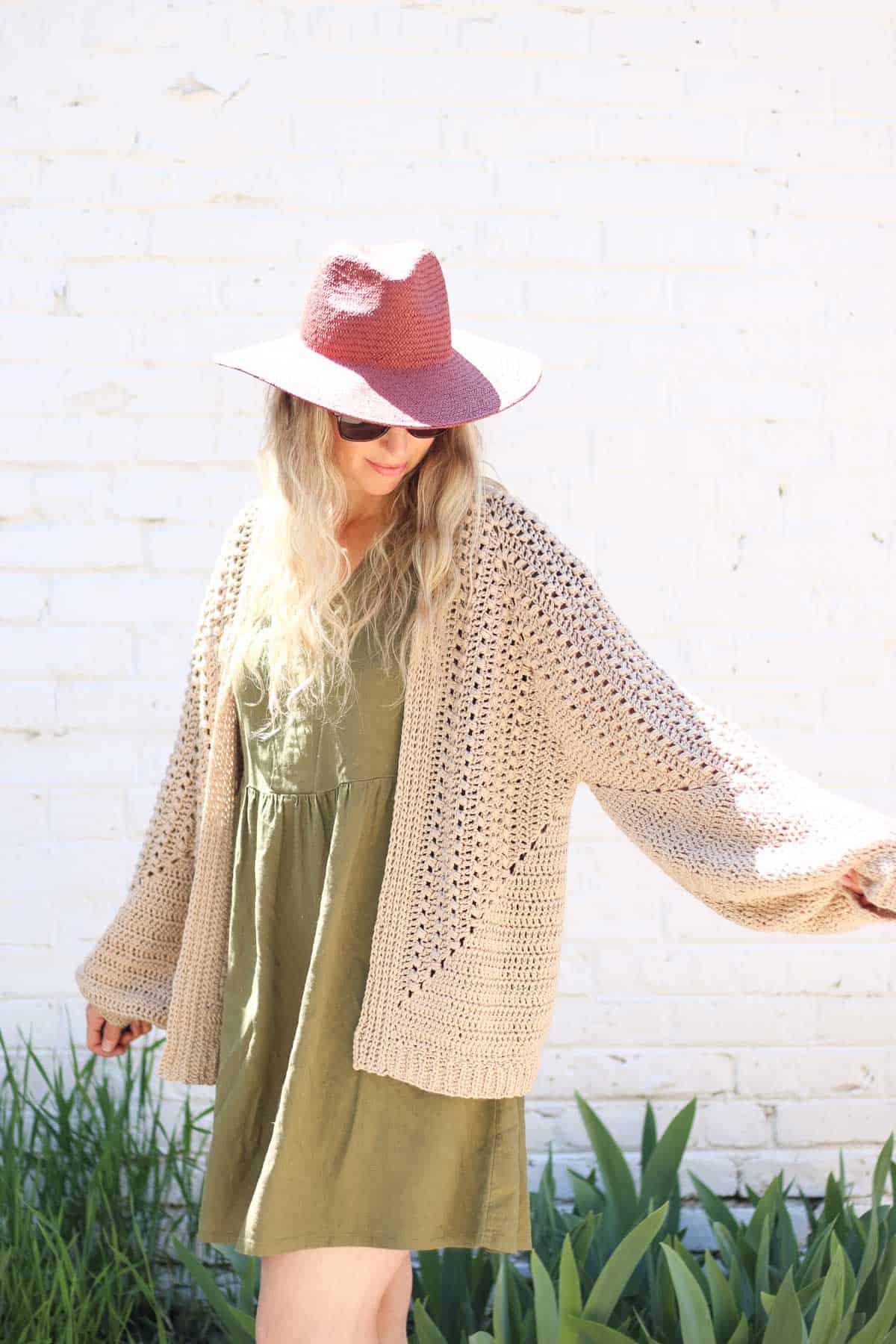
Drapey Puff Stitch Cardigan
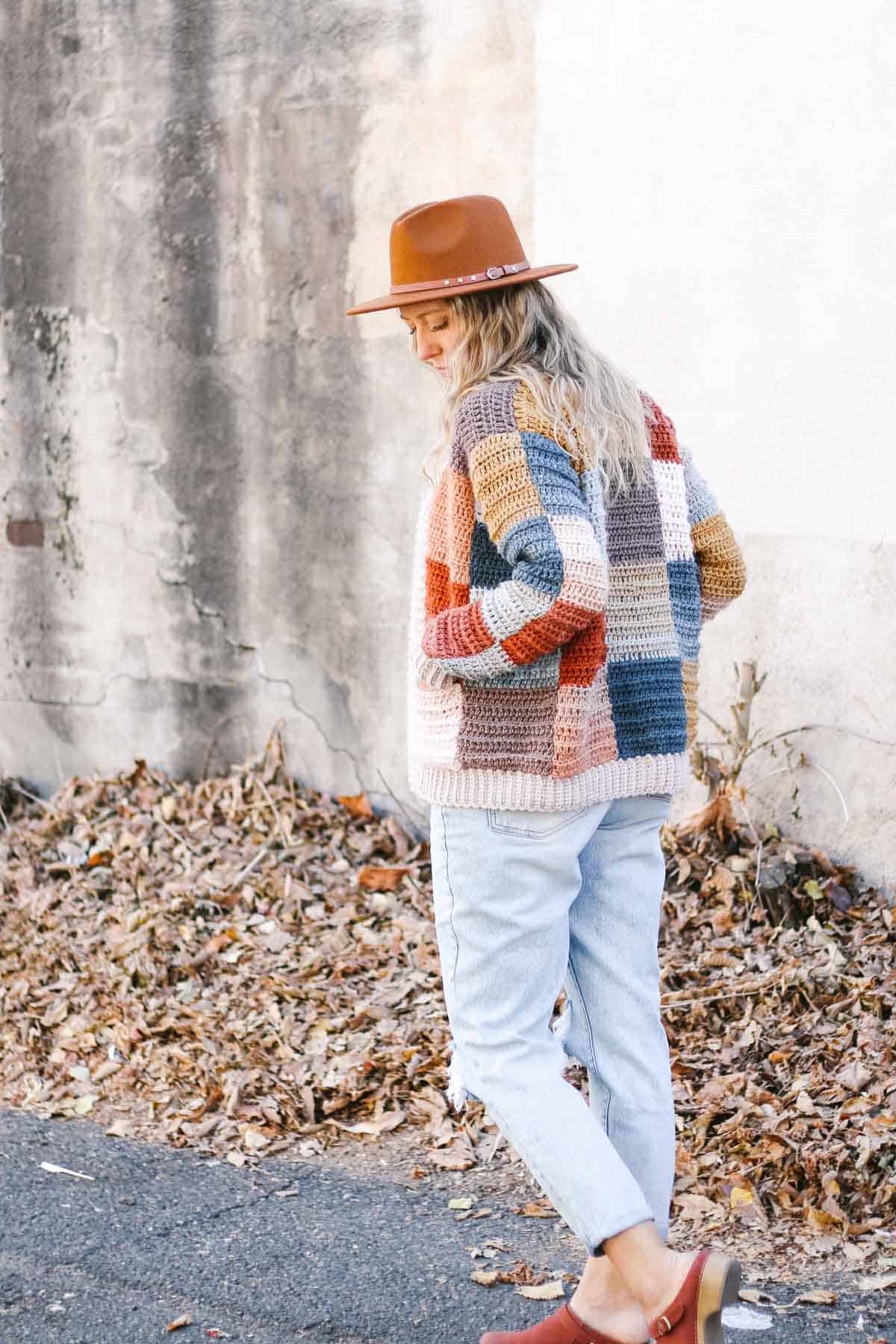
Patchwork Cardigan Pattern
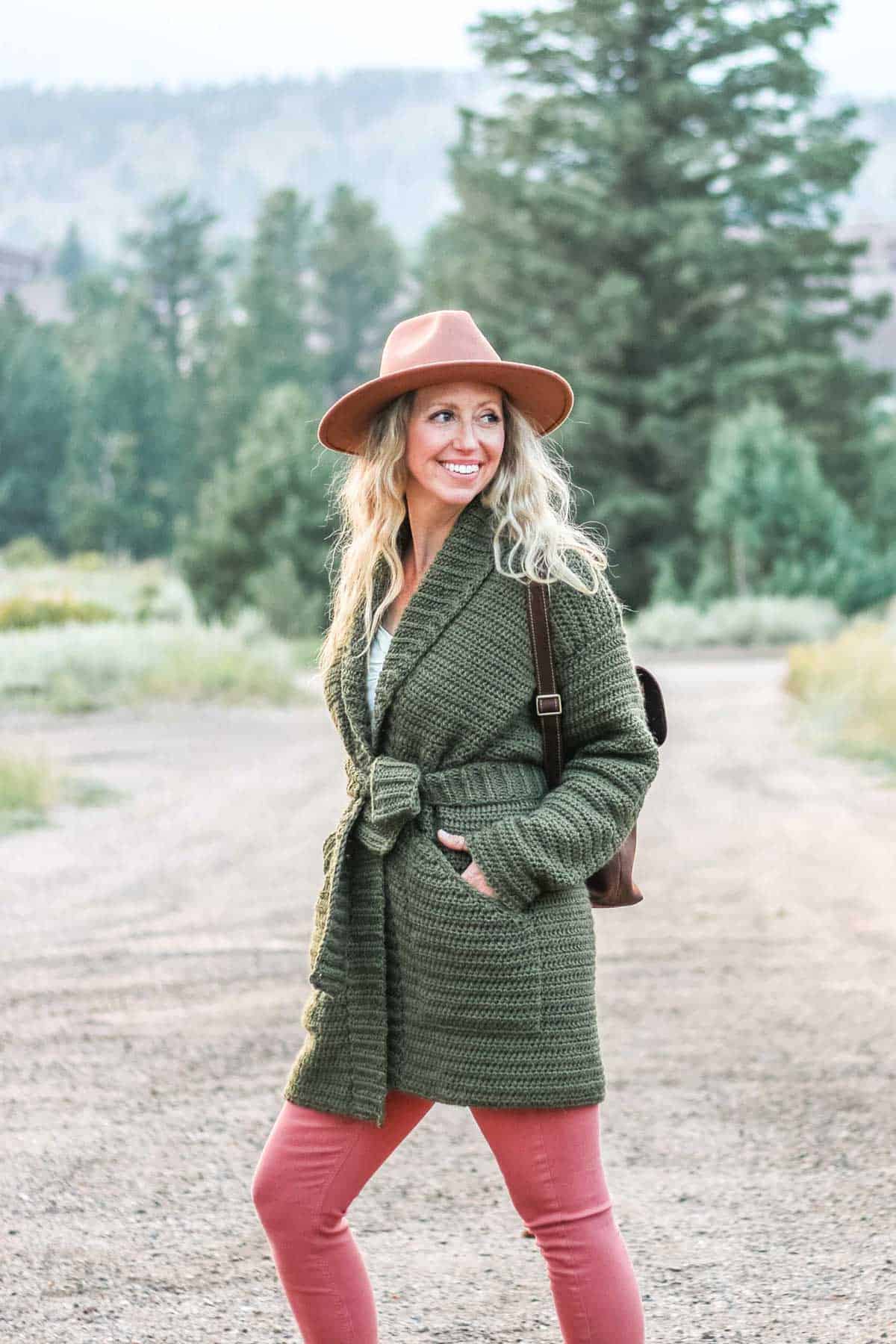
Long Jacket with Belt
Seamless Sweaters
For anyone who despises weaving in ends, I always recommend these seamless patterns. They are perfect examples of cardigans that are no more difficult than any other type of project.
RELATED: Don’t leave out your furry friends – make them their very own dog sweater (available in nine sizes!)
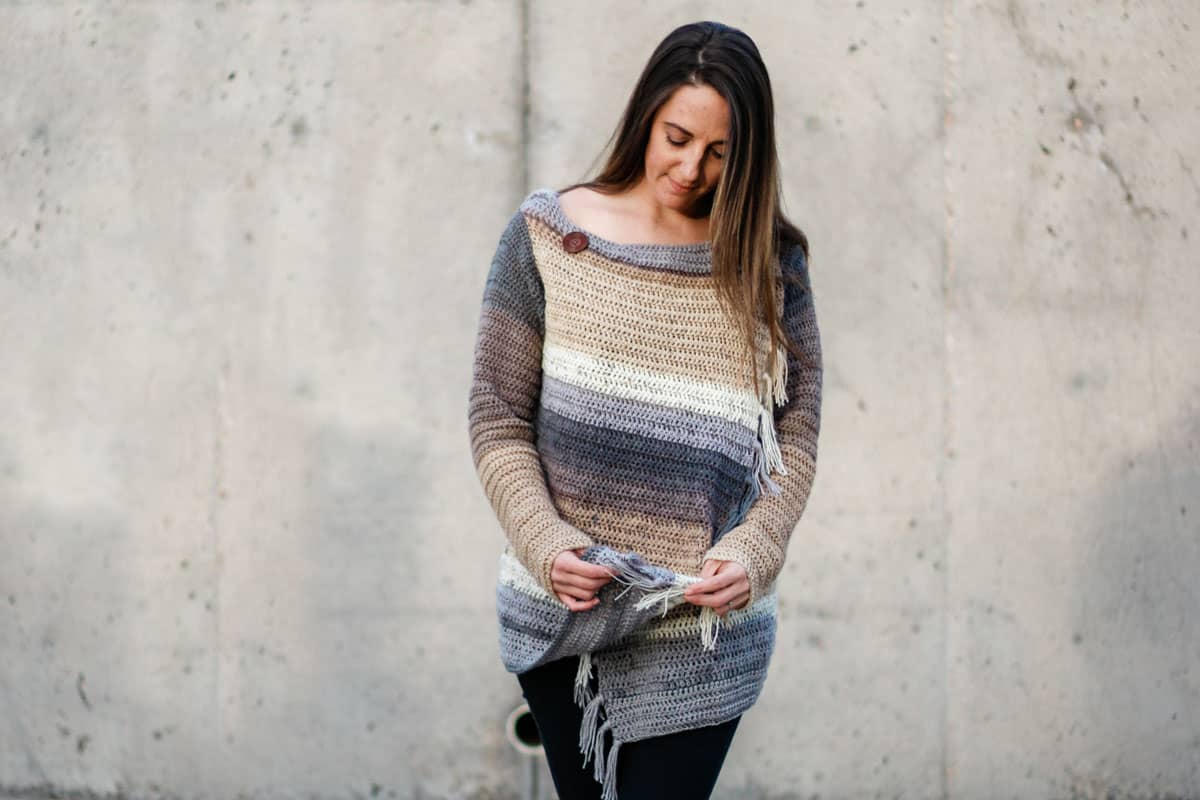
Easy Hooded Sweater with Fringe
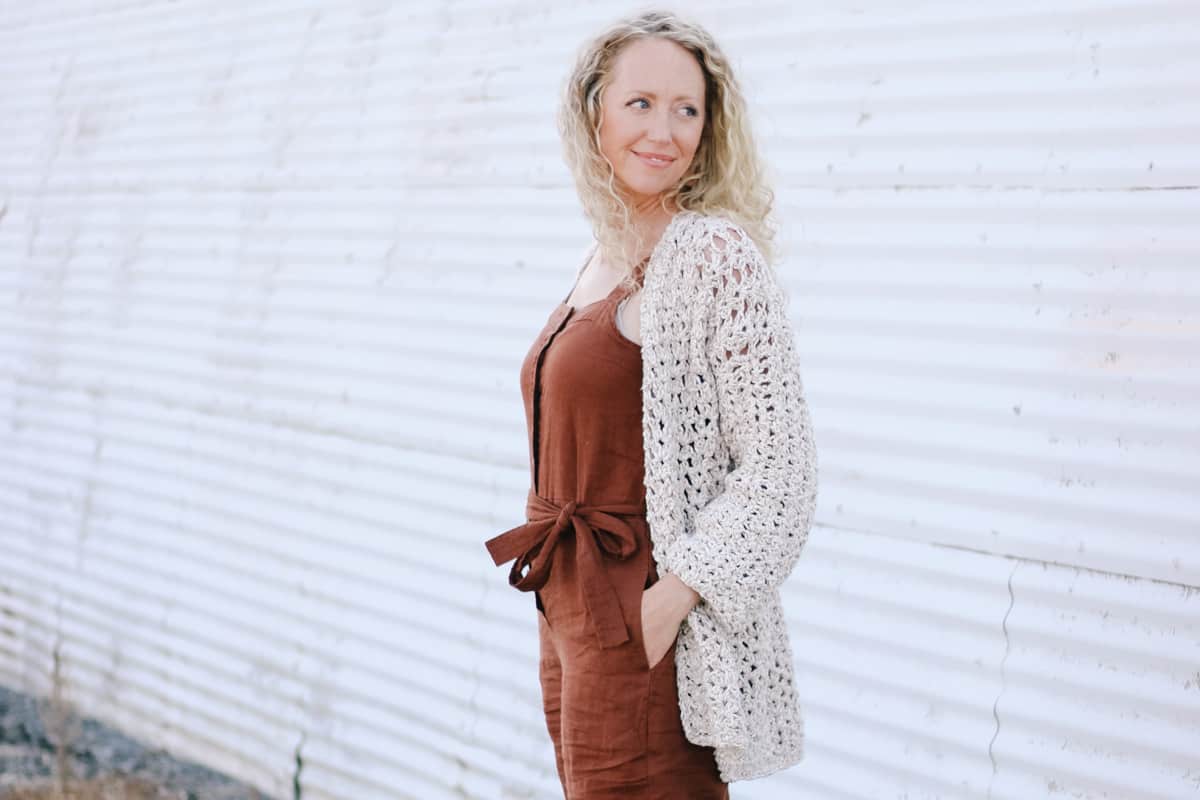
Simple Beginner Sweater Jacket
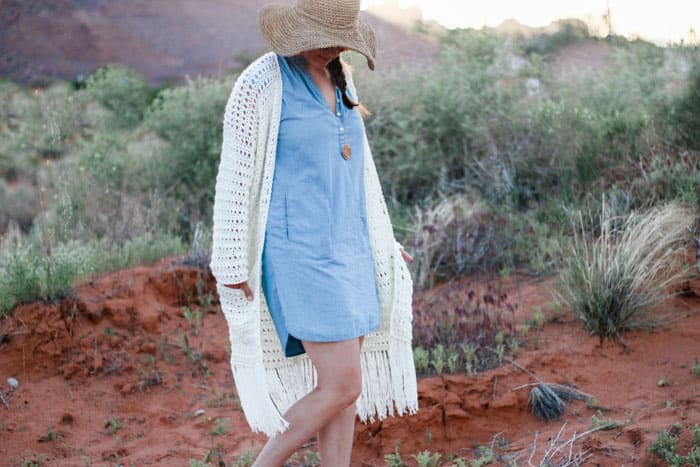
Long Seamless Cardigan
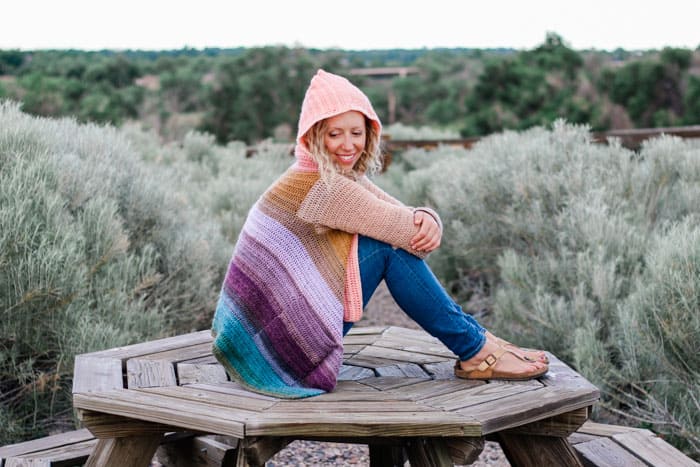
Colorful Cardigan with Hood
RELATED: 40+ Free Crochet Patterns to Make With Lion Brand Mandala Yarn
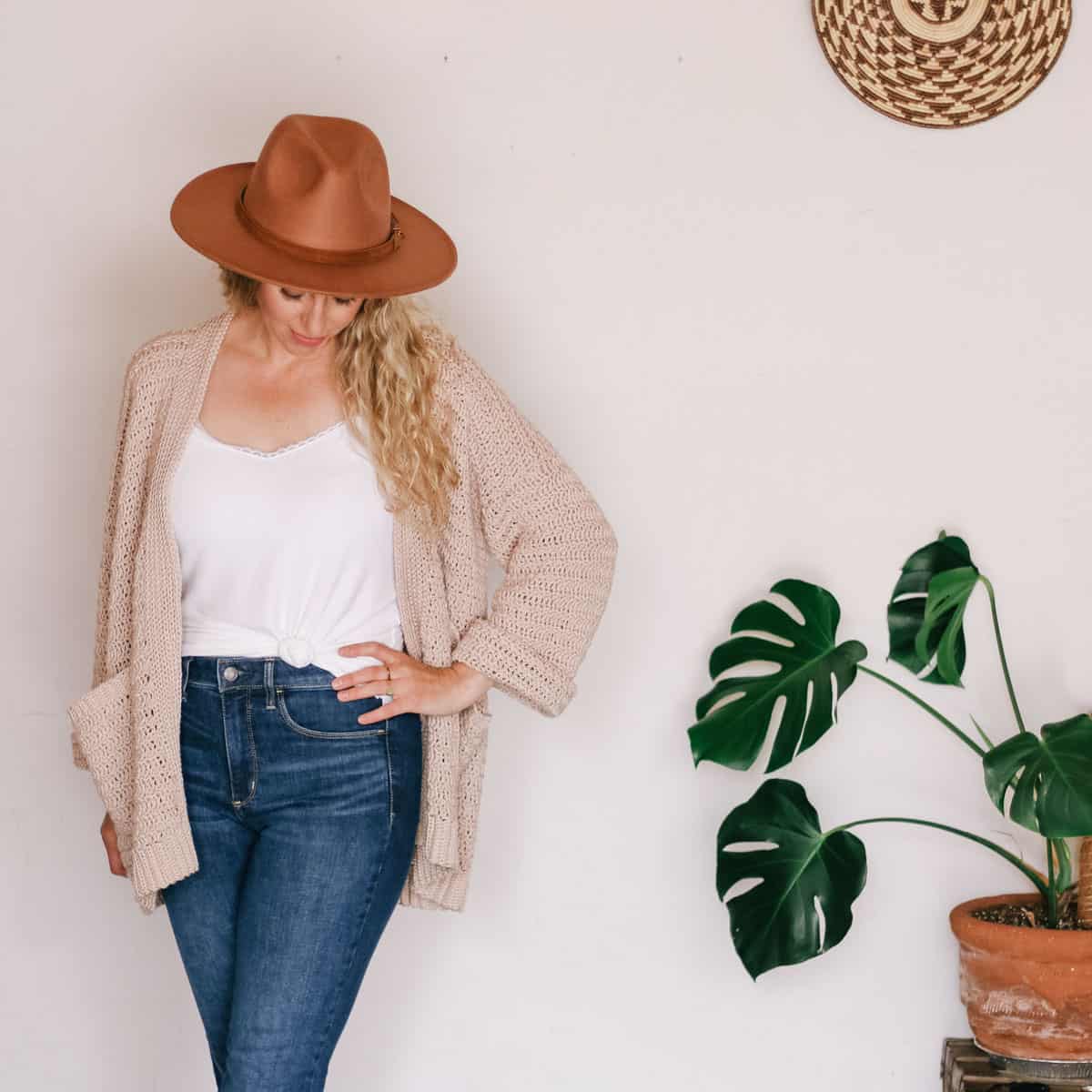
Nexus Cardigan for Beginners
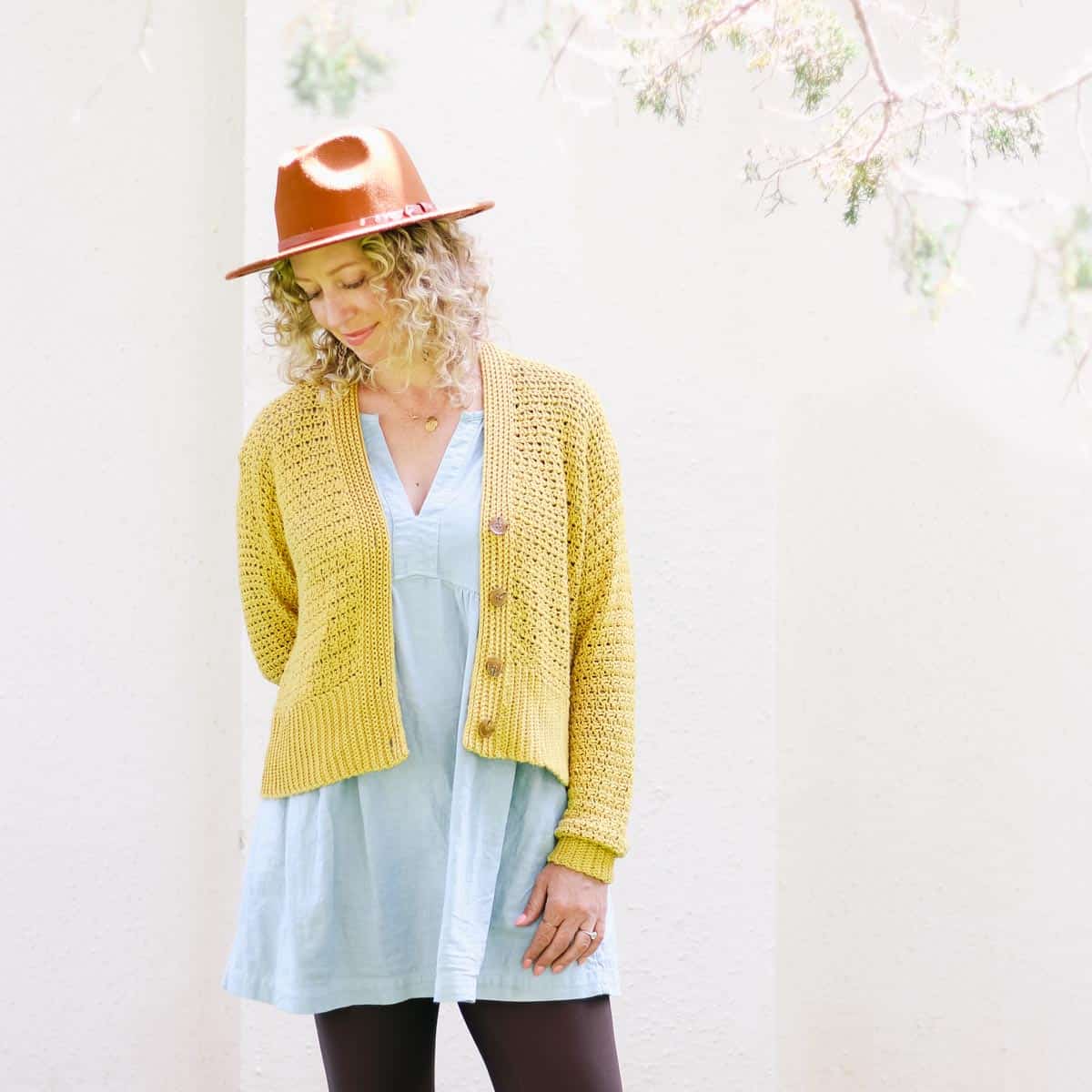
Customizable Cropped Cardigan
Intermediate Sweater Patterns
You’ve finished a few sweaters and you’re ready for your next challenge.
Intermediate-level patterns can include individual pieces or motifs like granny squares. They also might require some joining, either using crochet stitches or sewing. Ready to learn some new crochet skills?!
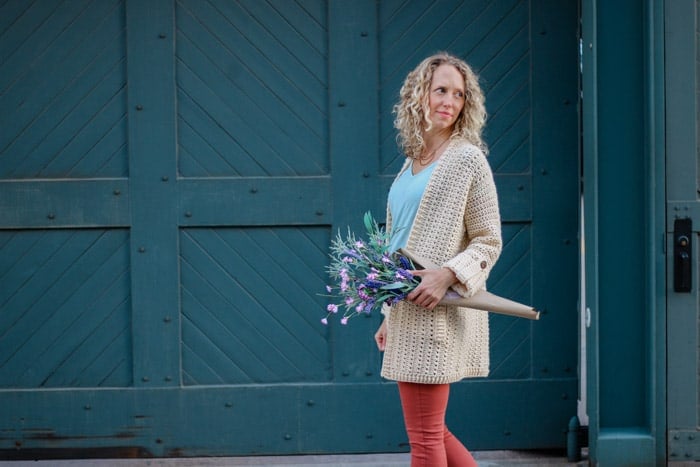
Summer Sweater with Pockets
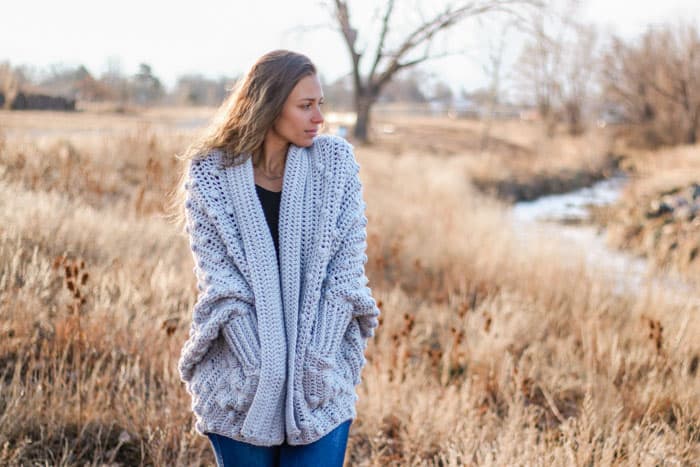
Chunky Bobble Cardi With Pockets
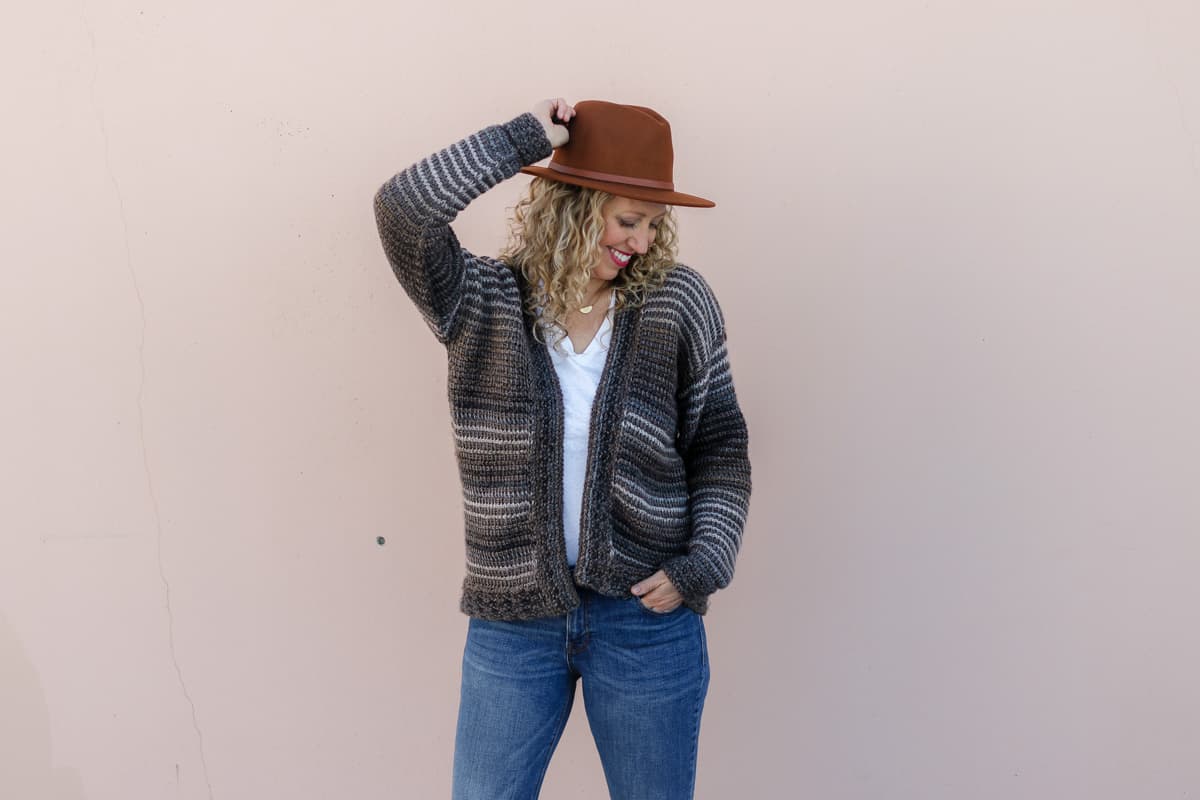
Easy Tunisian Crochet Cardigan
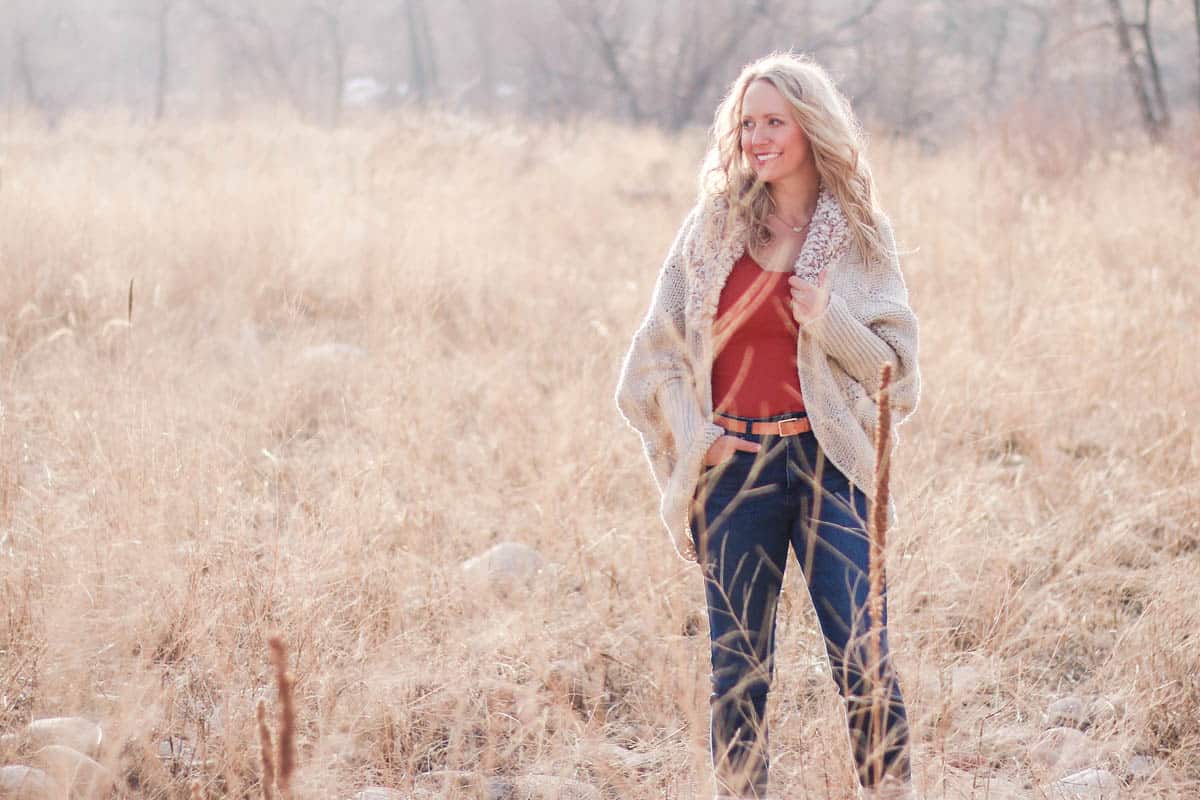
Oversized Cardigan With Fur Collar
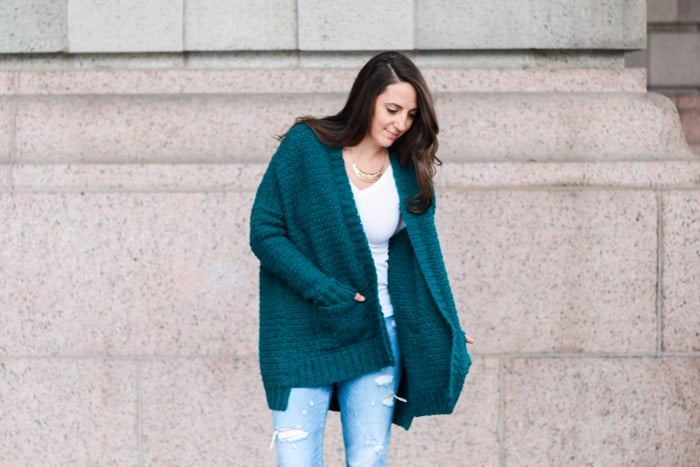
Staycation Cardigan
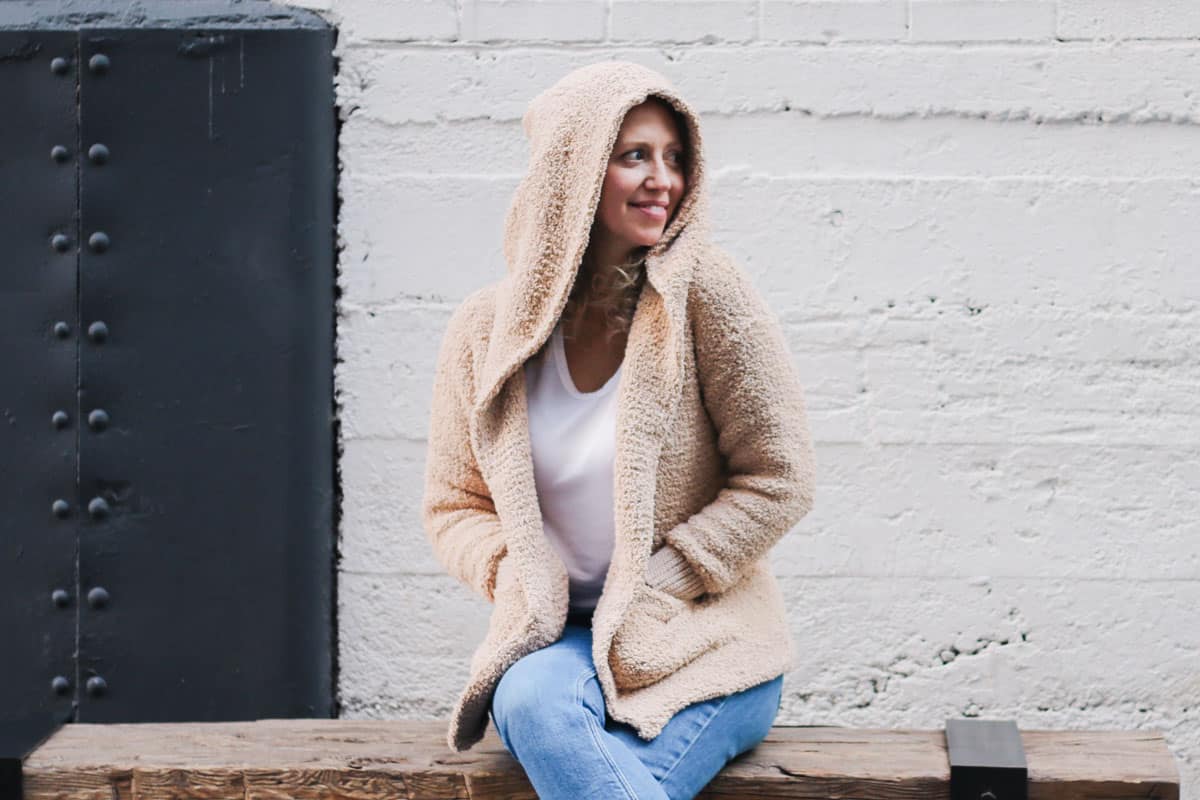
Sherpa Fleece Jacket with Hood
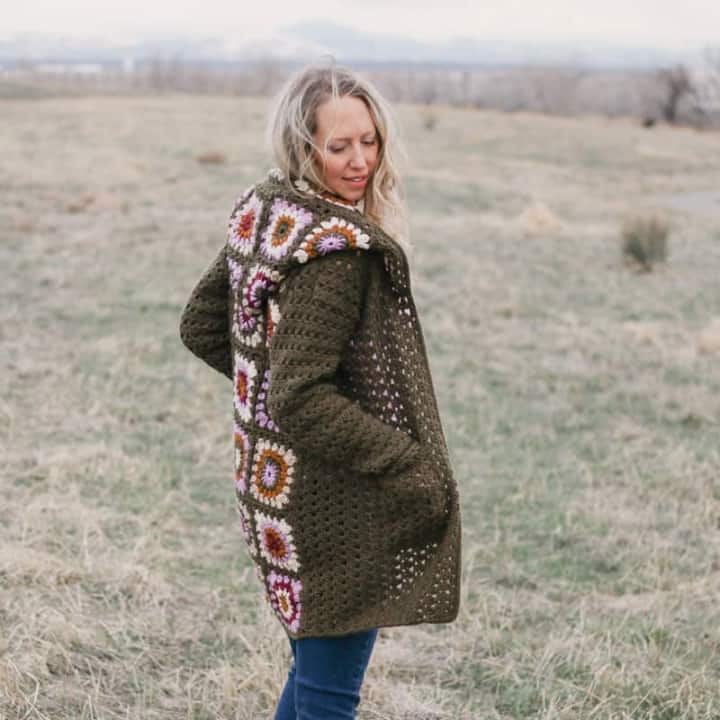
Modern Granny Square Cardigan
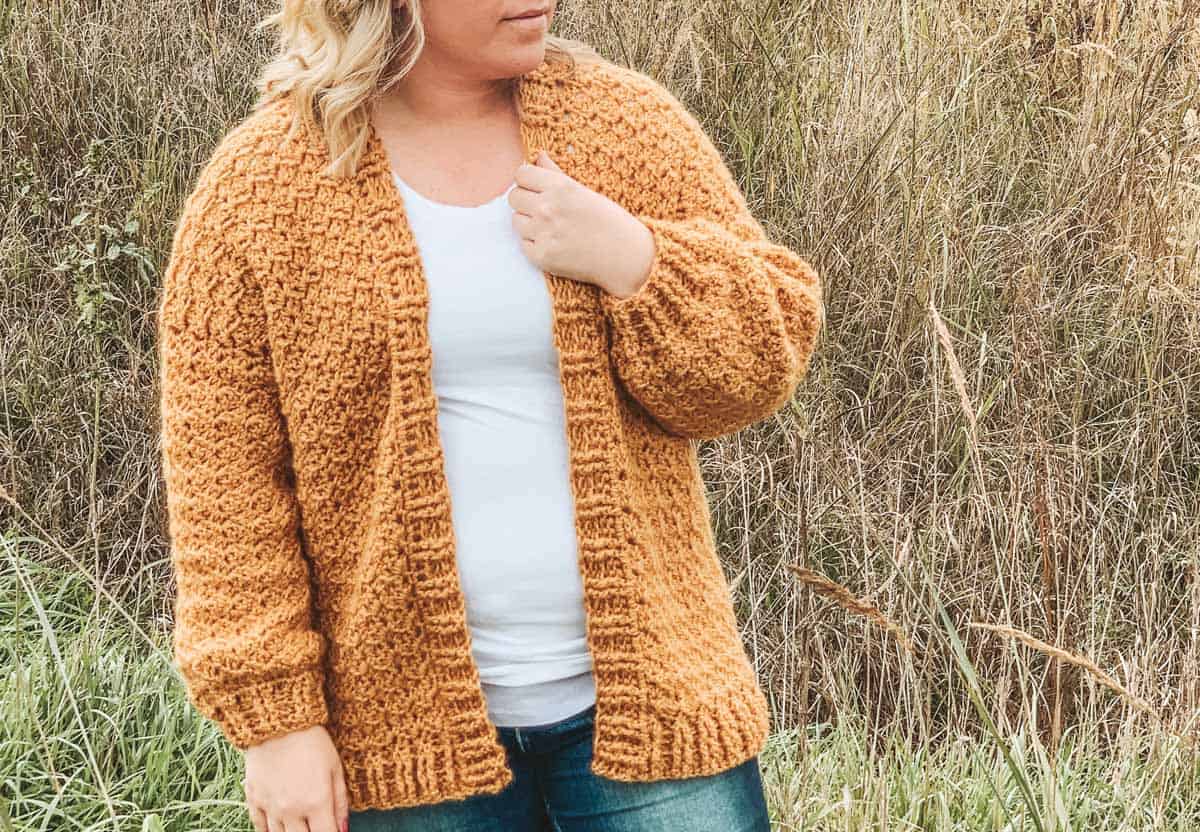
Versatile Everyday Cardigan
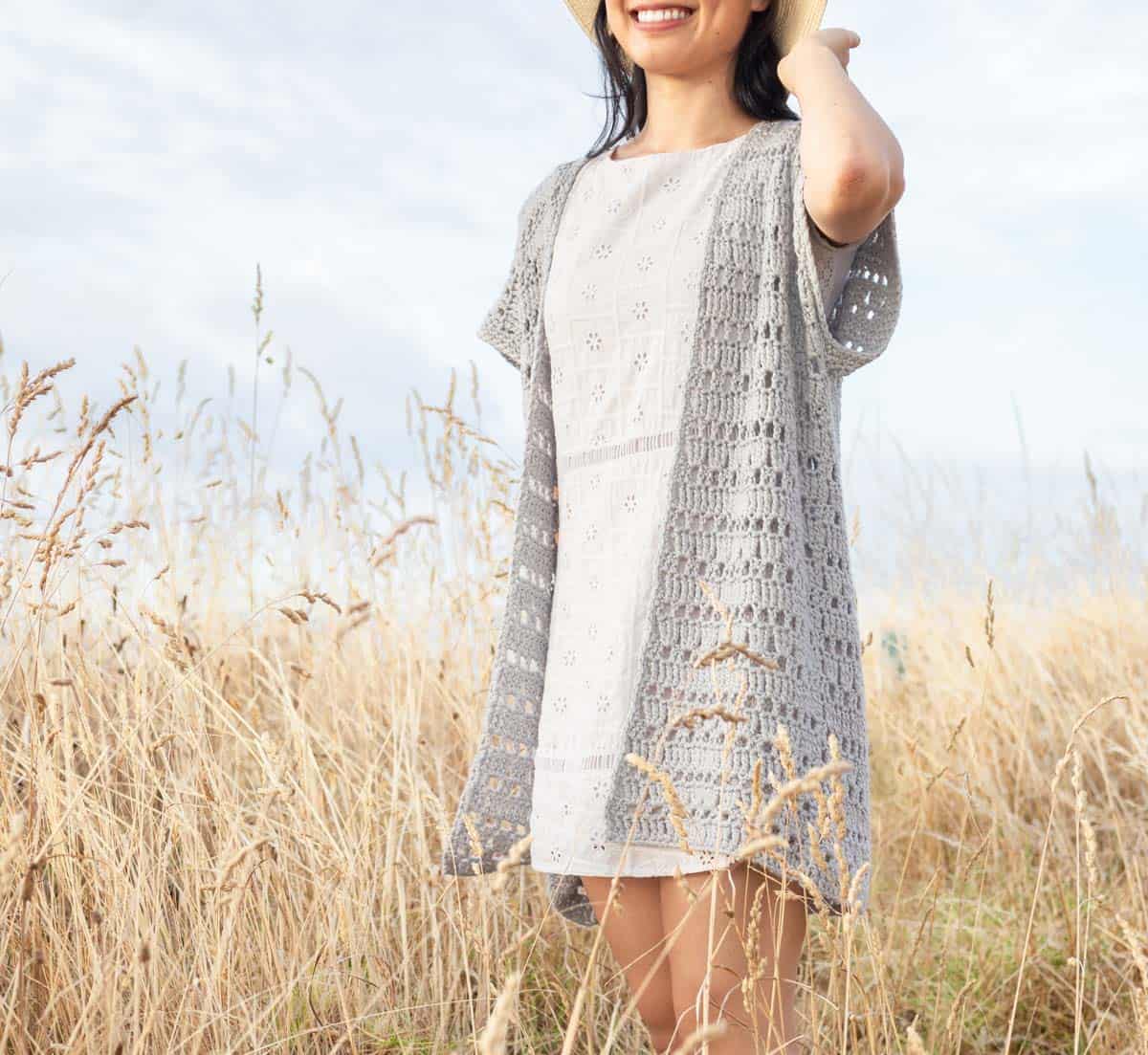
Summer Crochet Cardigan
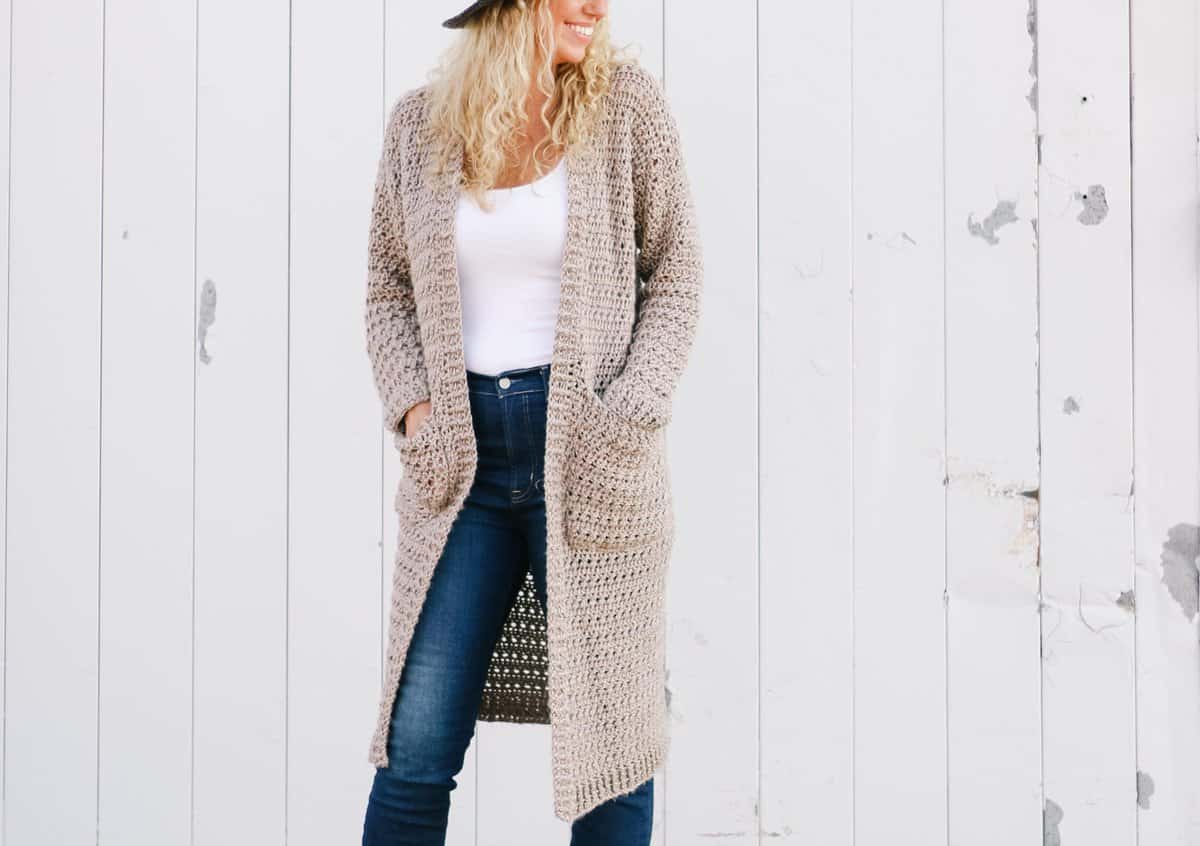
Elevation Duster
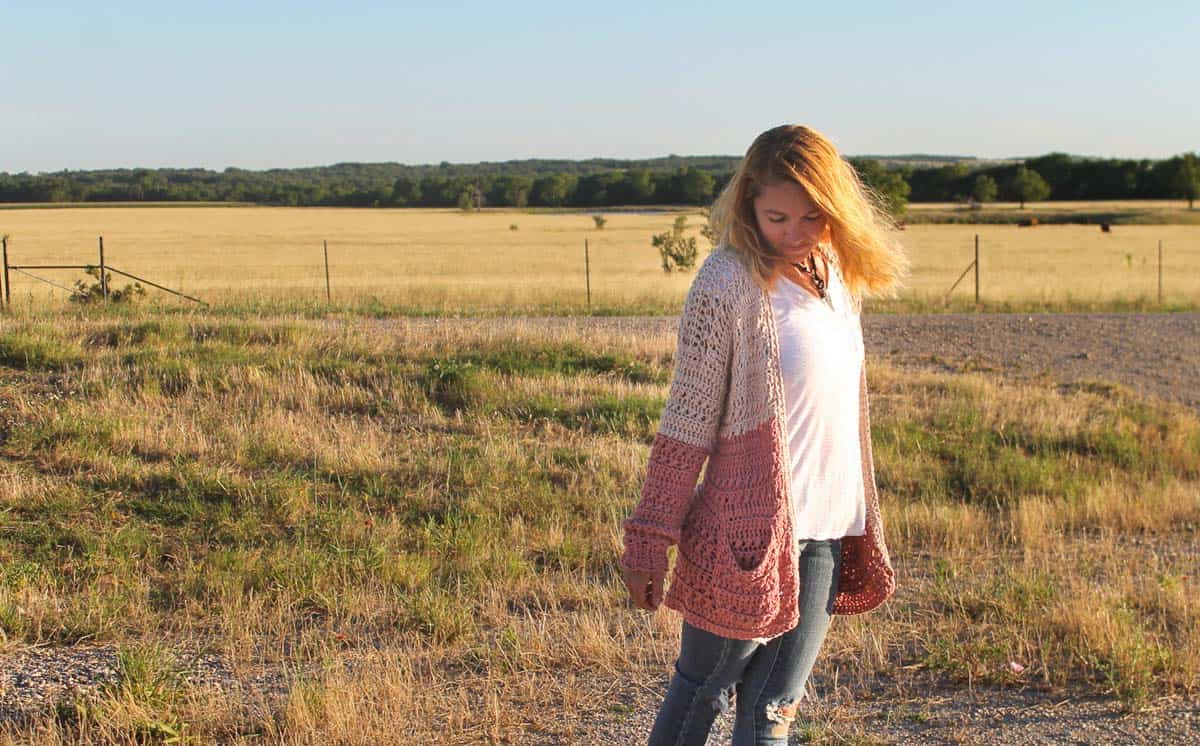
Flowy Color Block Cardigan

Easy V-Stitch Cardigan
Pullovers, Jumpers, and Sweatshirts
Crochet pullovers are fun because they can be designed as hoodies, ponchos, or tunics. I’ve tried them all and learned that for the simplest version, all you really need is two big rectangles and two smaller ones.
The jumper patterns below include a variety of necklines like v-necks, cowl necks, and boat necklines. You’ll also find different methods used to create the design, including top-down raglan and seamless yoke patterns.

Furry Crochet Hoodie
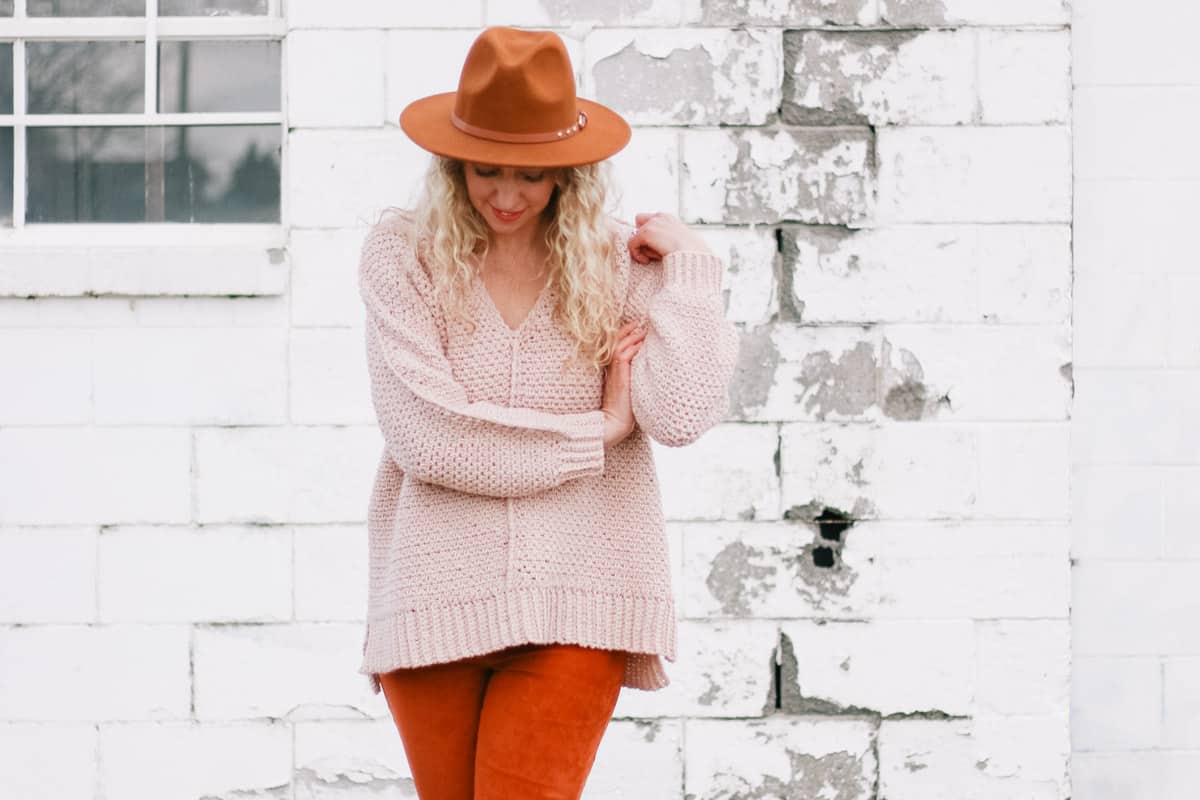
“Inside Out” Pullover with Exposed Seams
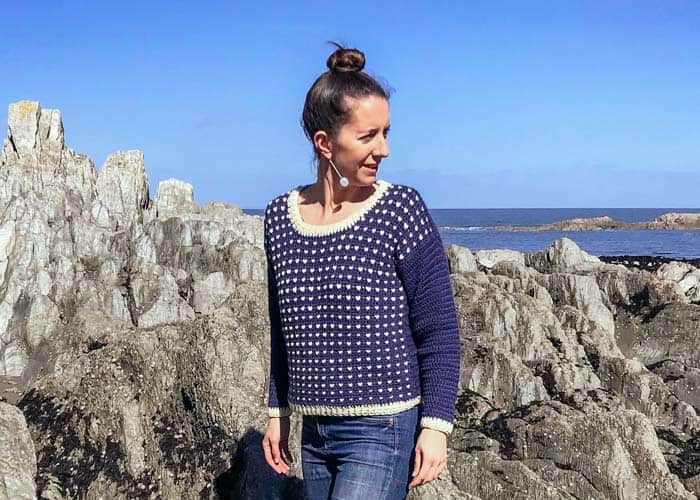
Fisherman’s Sweater

Colorful Top Down Raglan
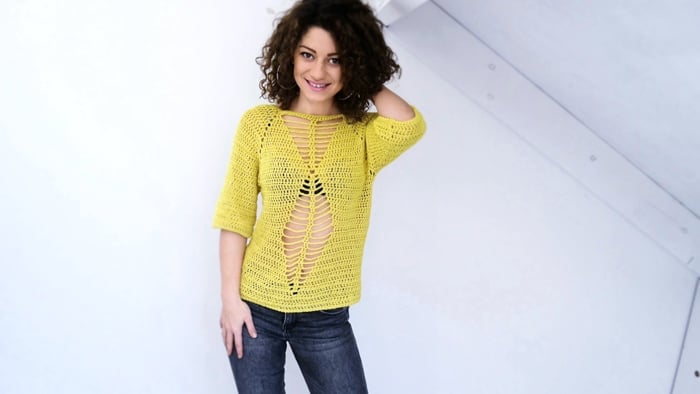
Unique Raglan Crochet Top
Related: 30+ Modern Crochet Tops + Tanks
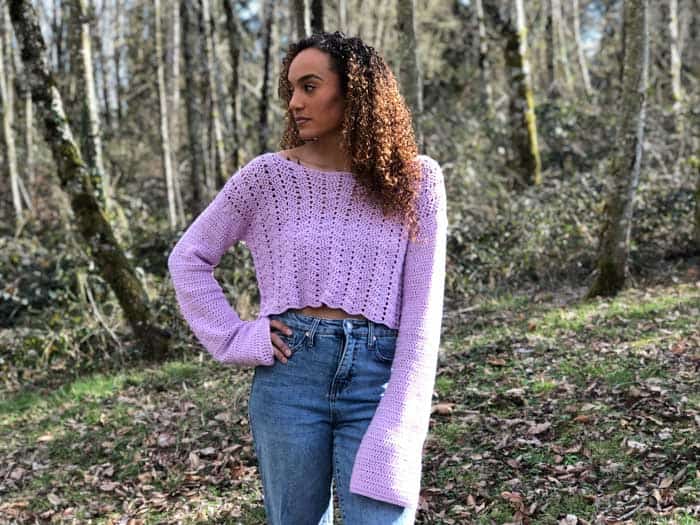
Bell Sleeve Sweater
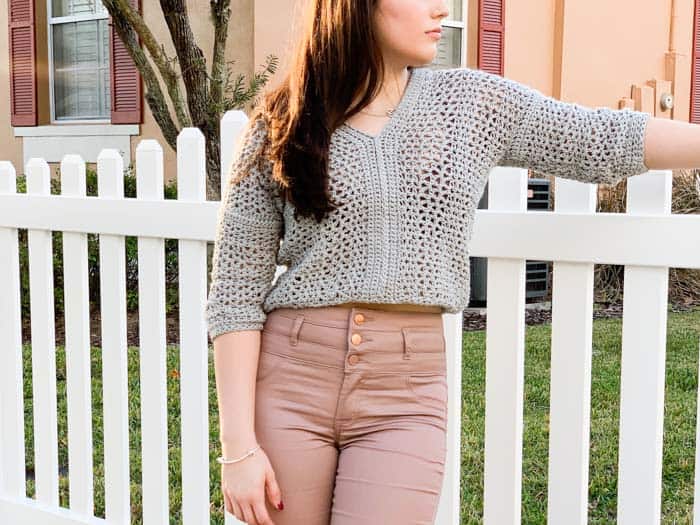
V-Neck Cropped Sweater
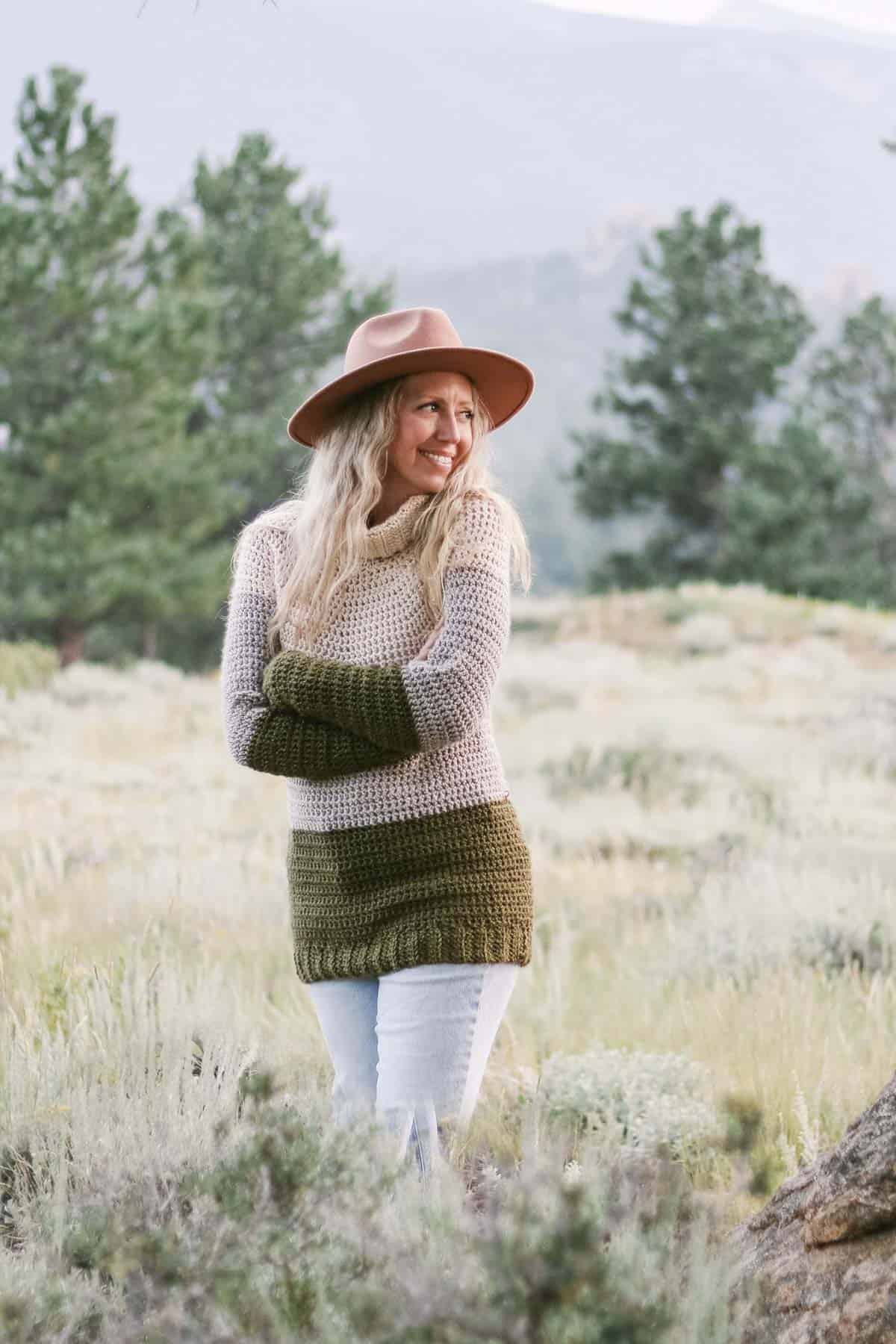
Top Down Yoke Sweater
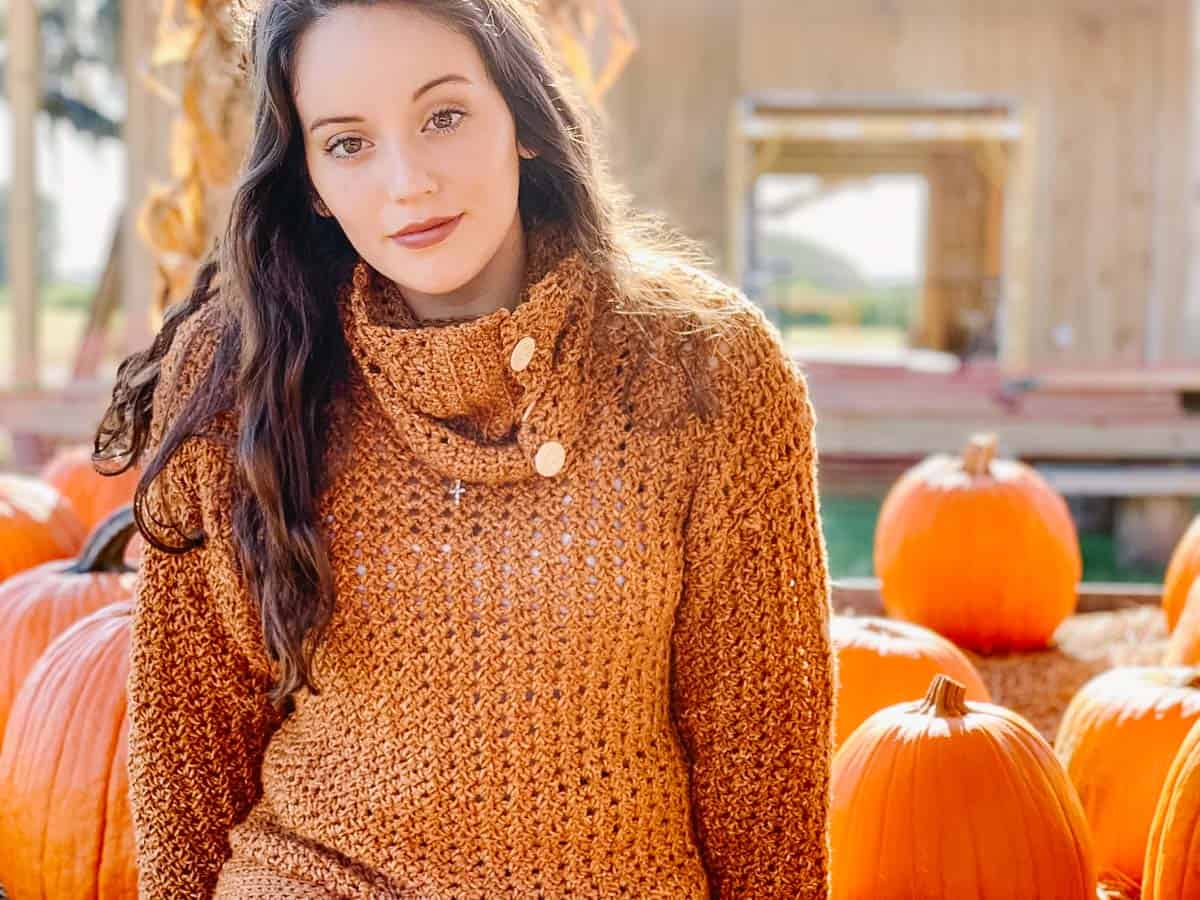
Harvest Pullover with Removable Turtleneck
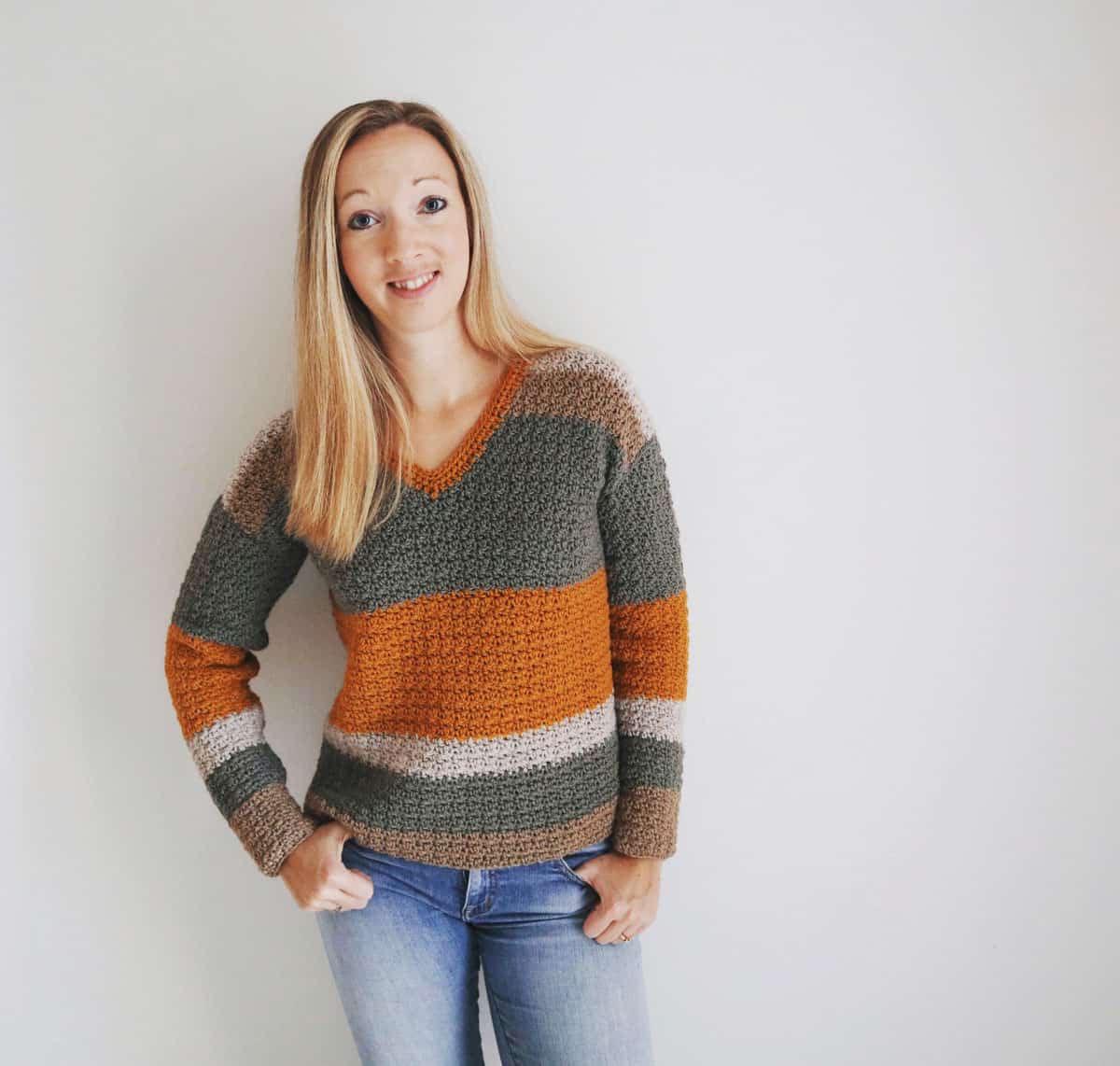
Striped V-Neck Jumper
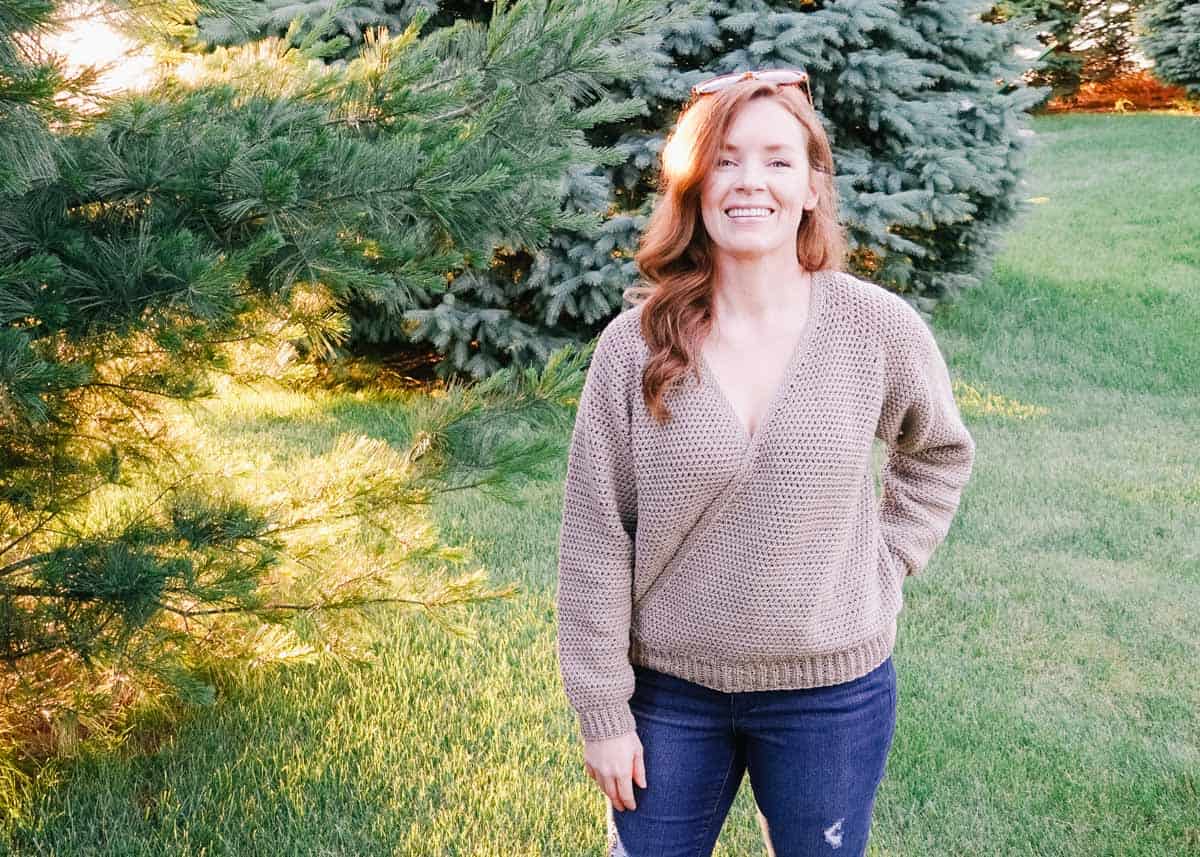
Ballet Wrap Sweater
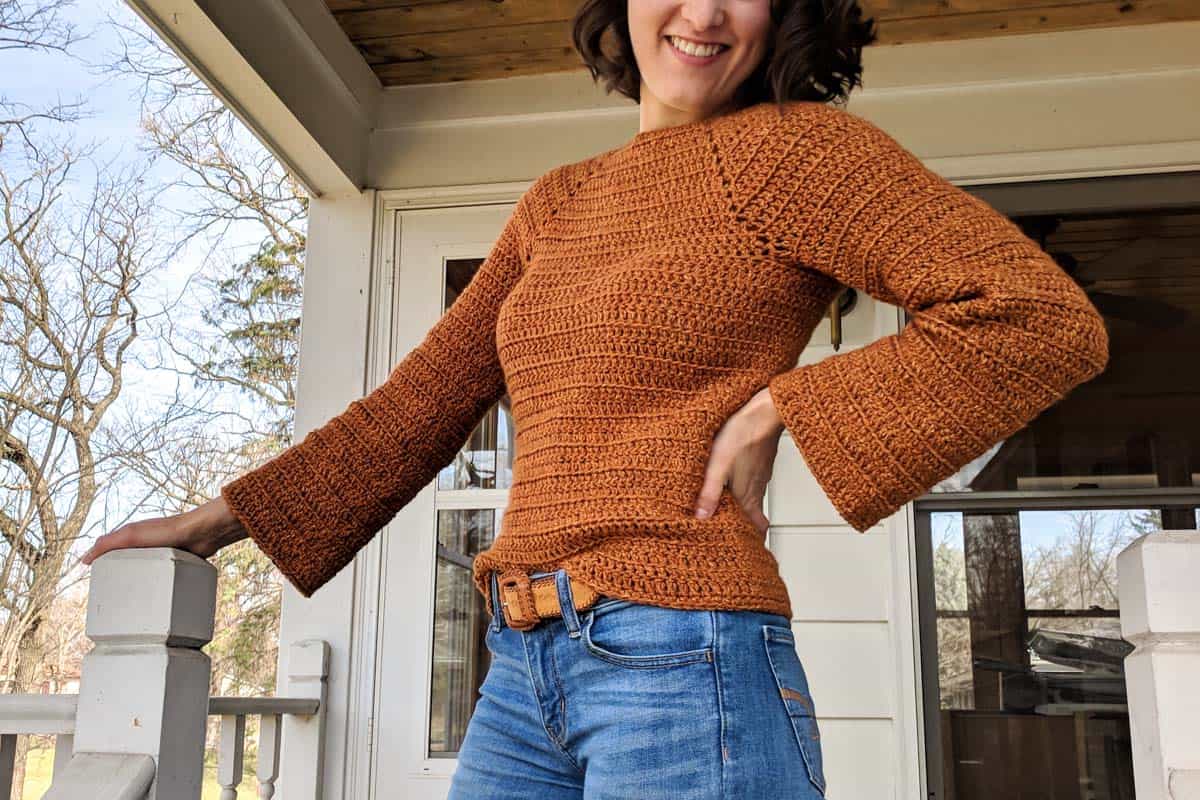
Easy + Quick Beginner Raglan
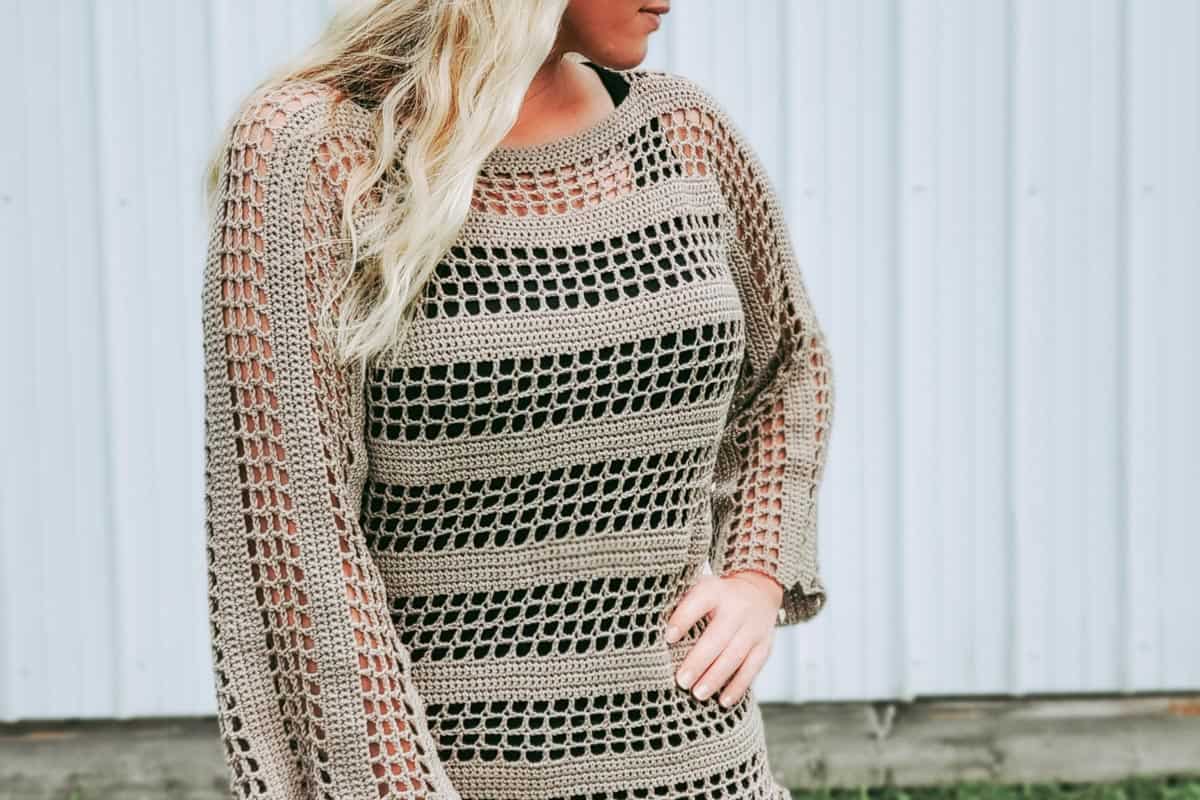
Trans-Seasonal Mesh Top
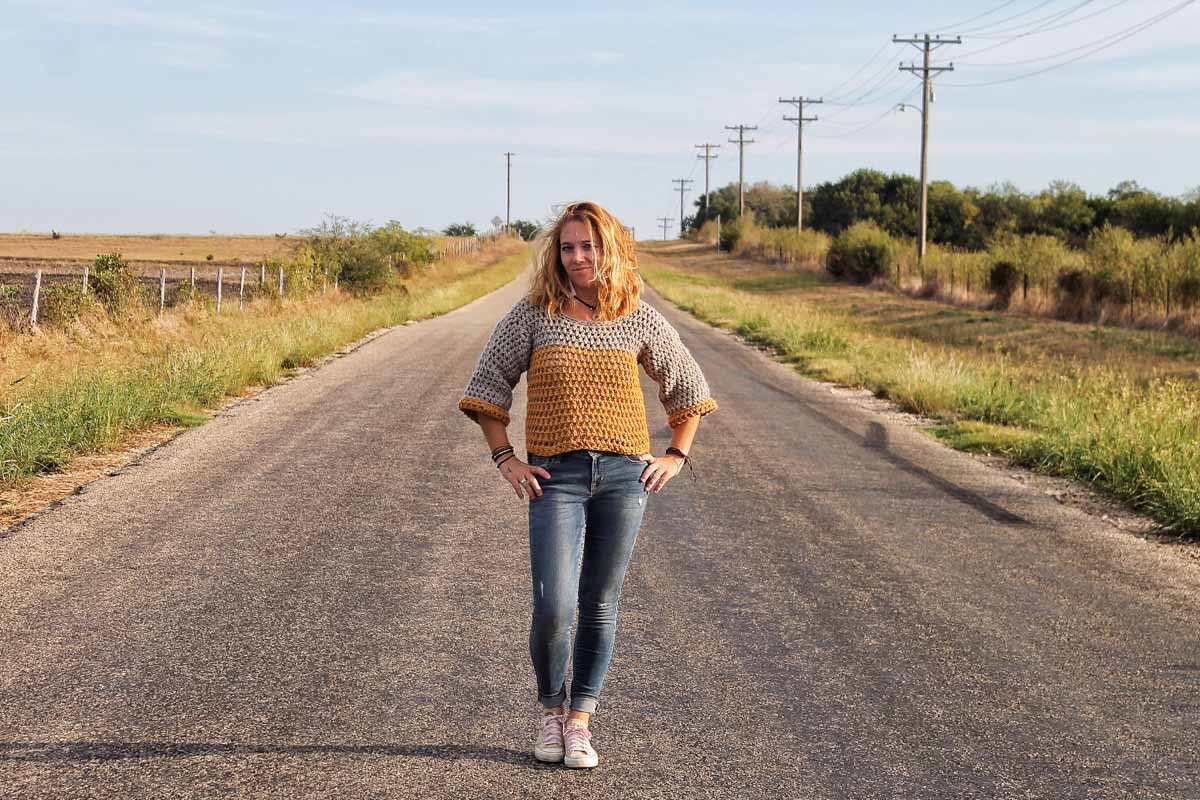
The Weekender Color Block Sweater
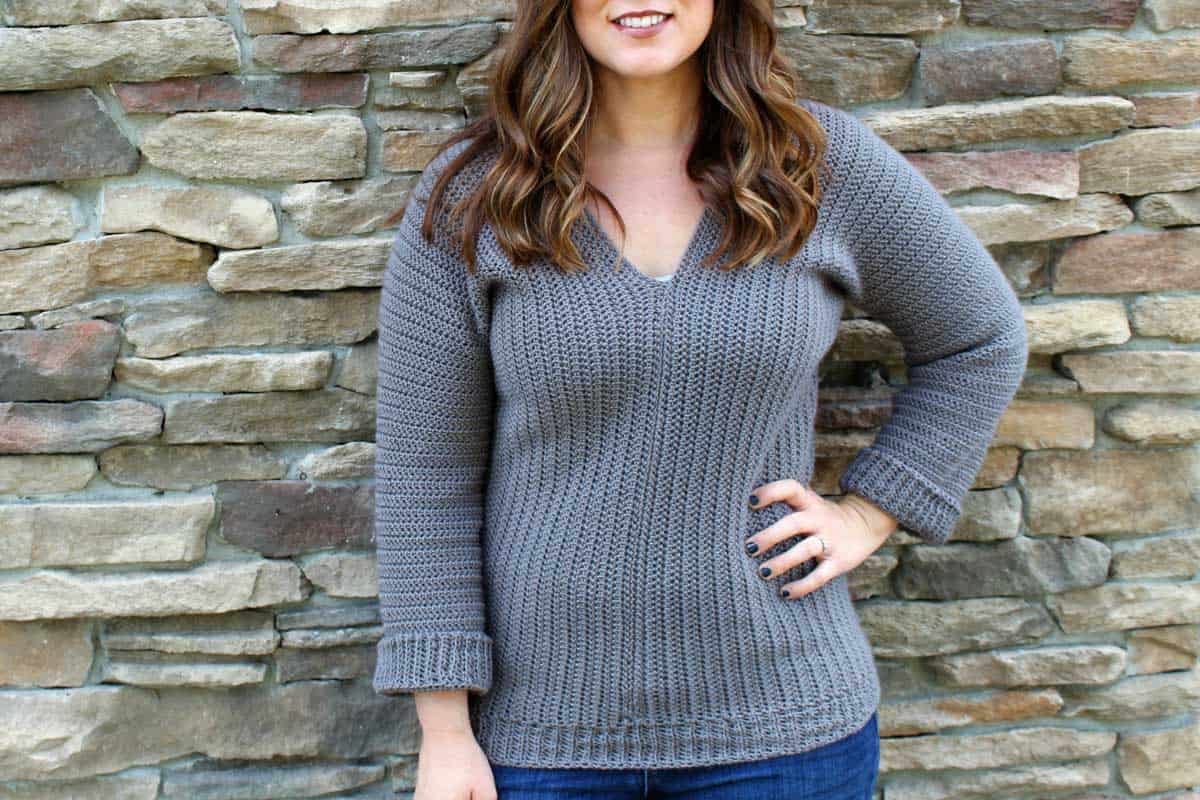
Traditional V-neck Pullover
Wanna save this pattern?
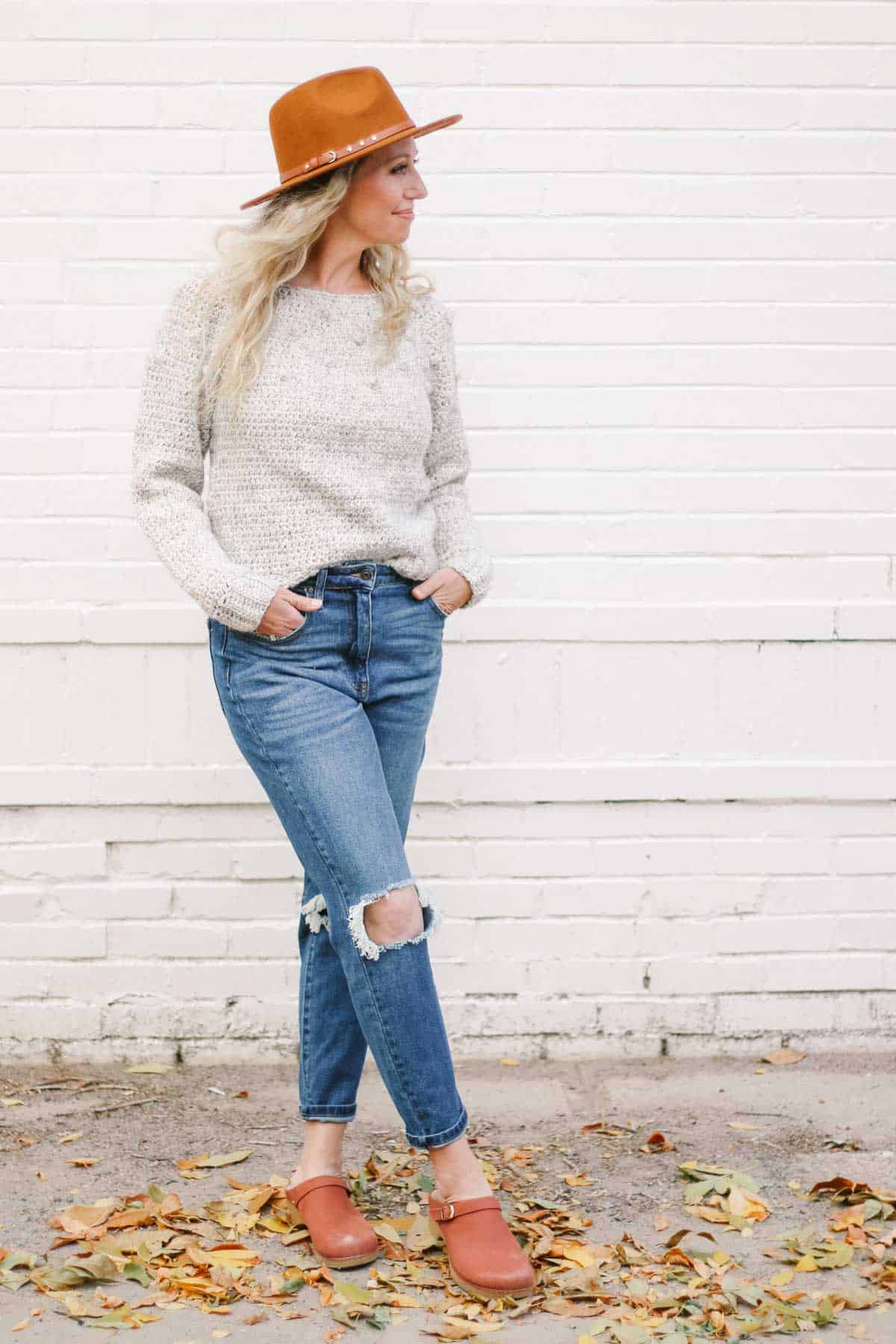
Crew Neck Sweater
Poncho Patterns
Ponchos can be a great sweater choice for beginners because they are often made from very simple shapes. Some patterns even include sleeves, making them a hybrid pullover sweater mixed with poncho, or “swancho” for short!
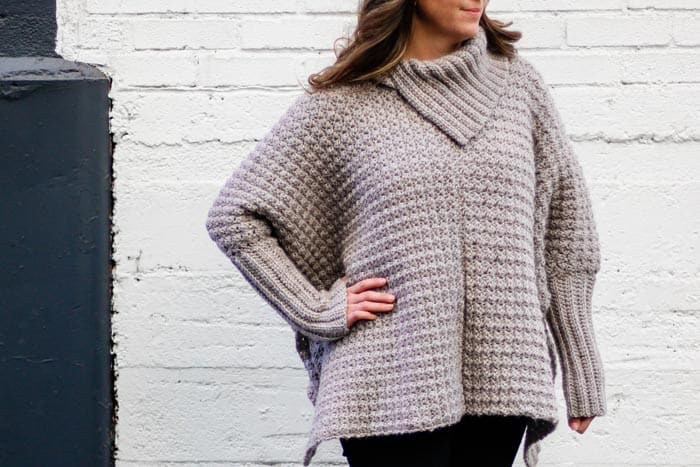
Poncho Sweater with Sleeves

Minimalist Poncho with Kangaroo Pocket
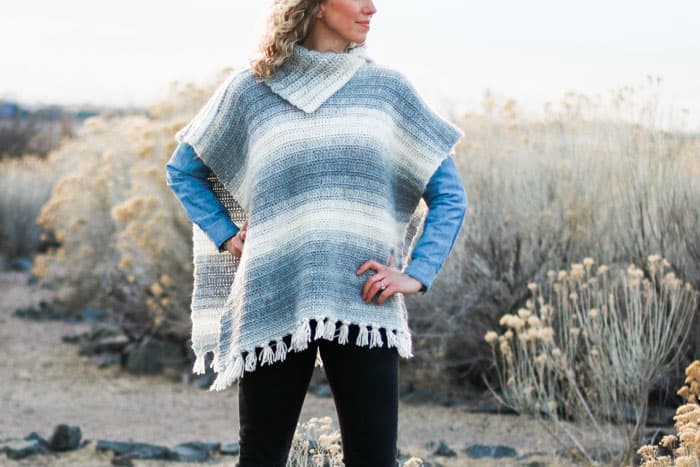
Knit-Look Poncho with Tassels
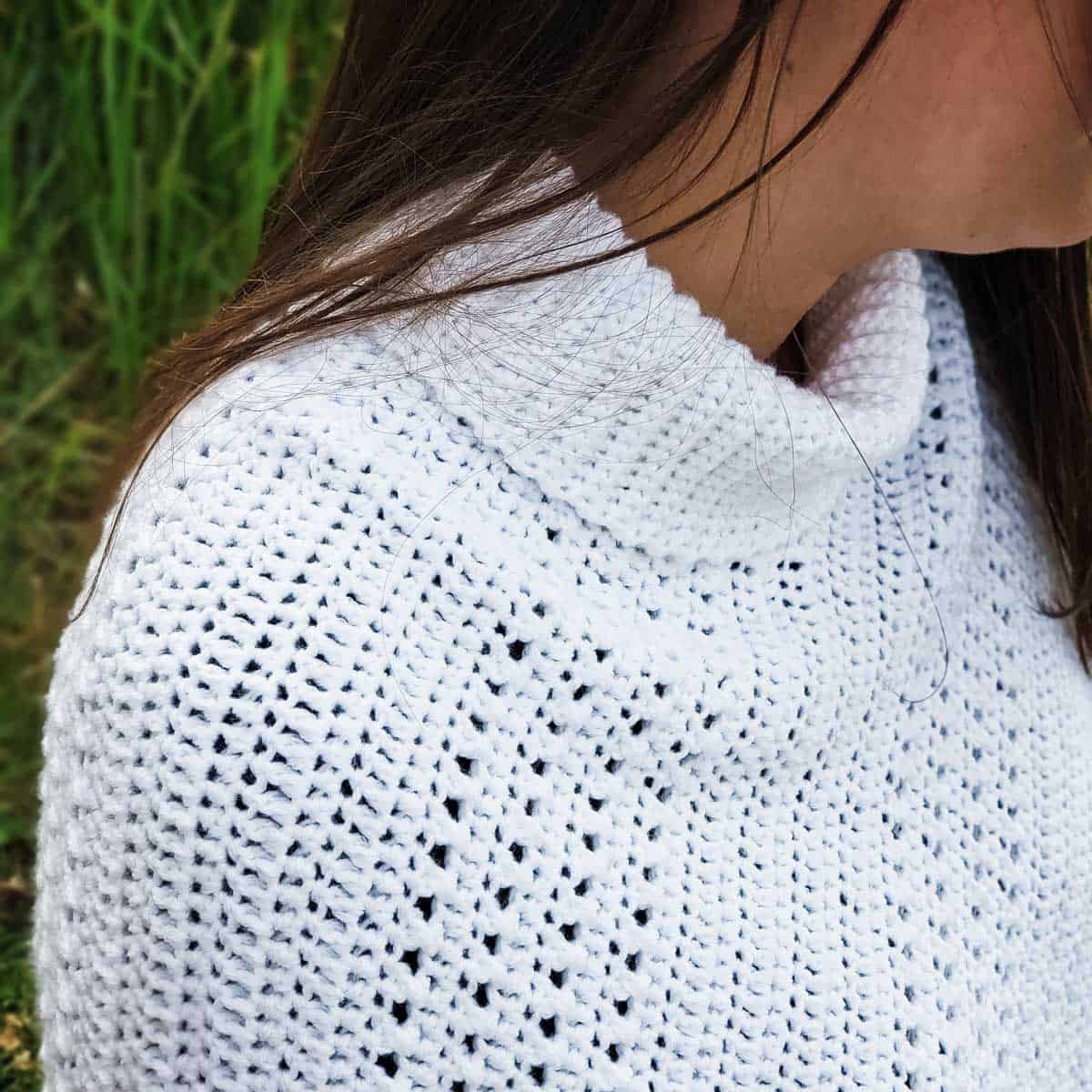
Easiest Rectangle Poncho
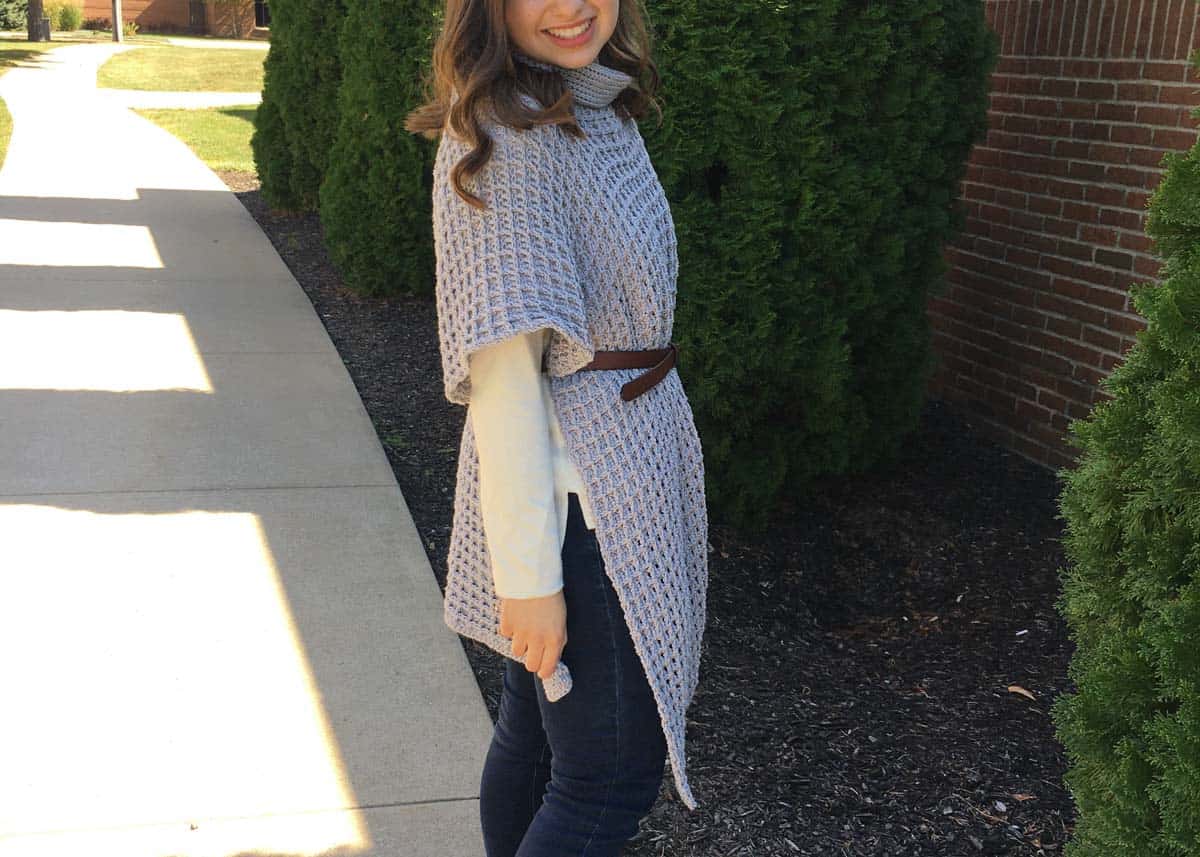
Seamless Waffle Stitch Poncho
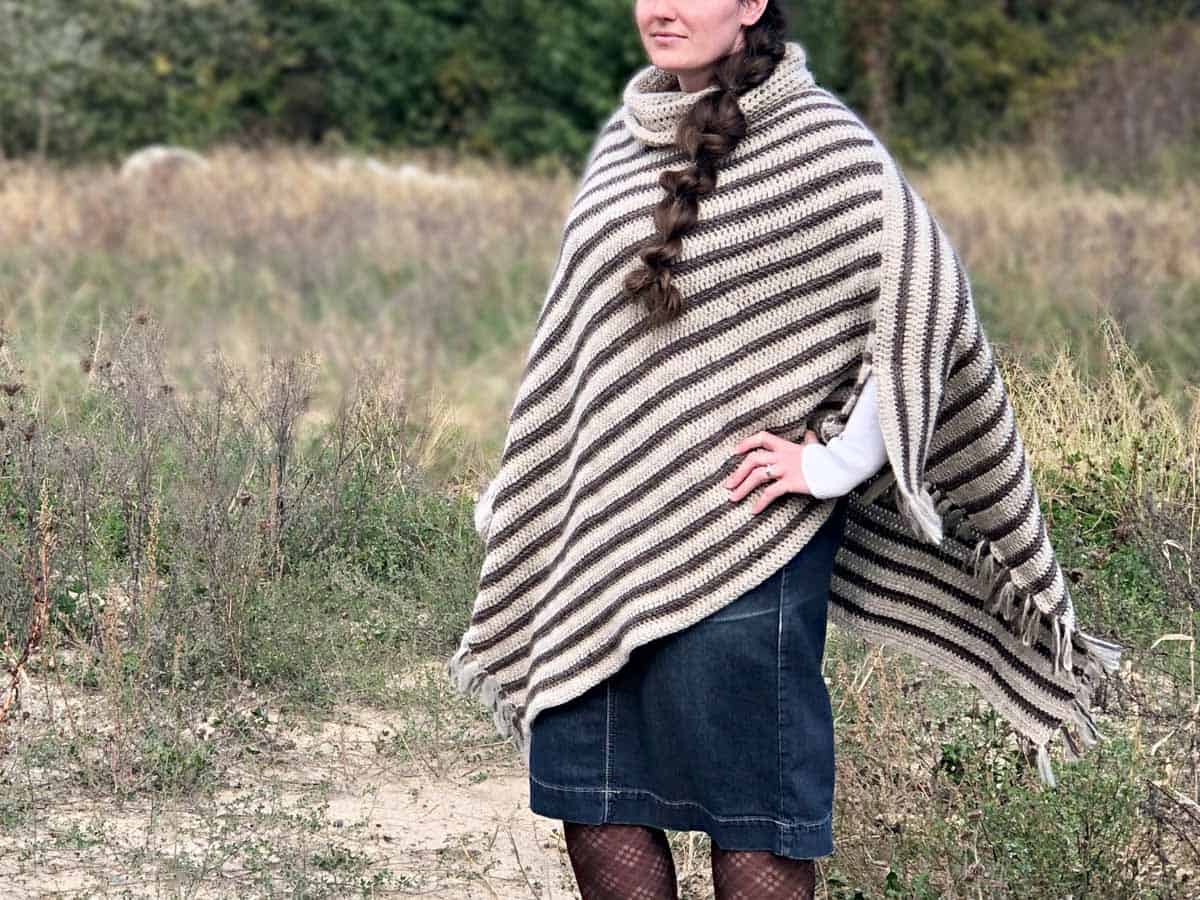
Asymmetrical Poncho Made From Rectangles
Related: 30+ Free Crochet Poncho Patterns – for all seasons
More Garments to Crochet:
Here are our favorite handpicked crochet clothing patterns.
Shrug Patterns
Crochet shrugs are typically easy, even for beginners, because they’re made from a simple rectangle or square. You’ll also love shrugs for their versatility throughout different seasons.
See all our crochet shrug patterns →
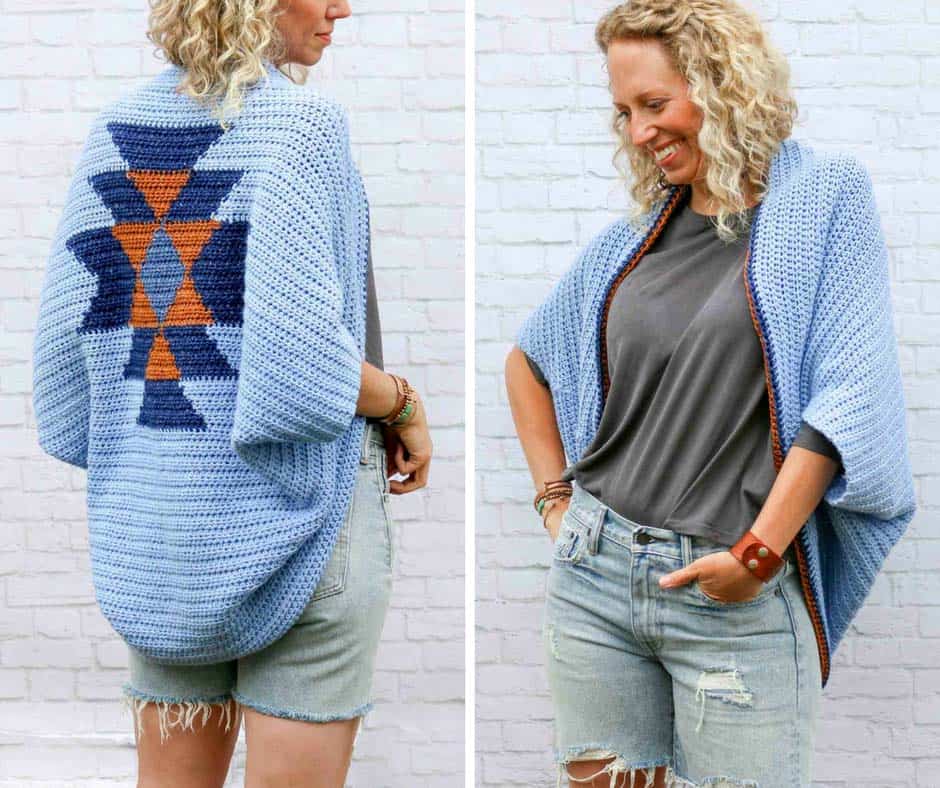
Colorwork Shrug Pattern
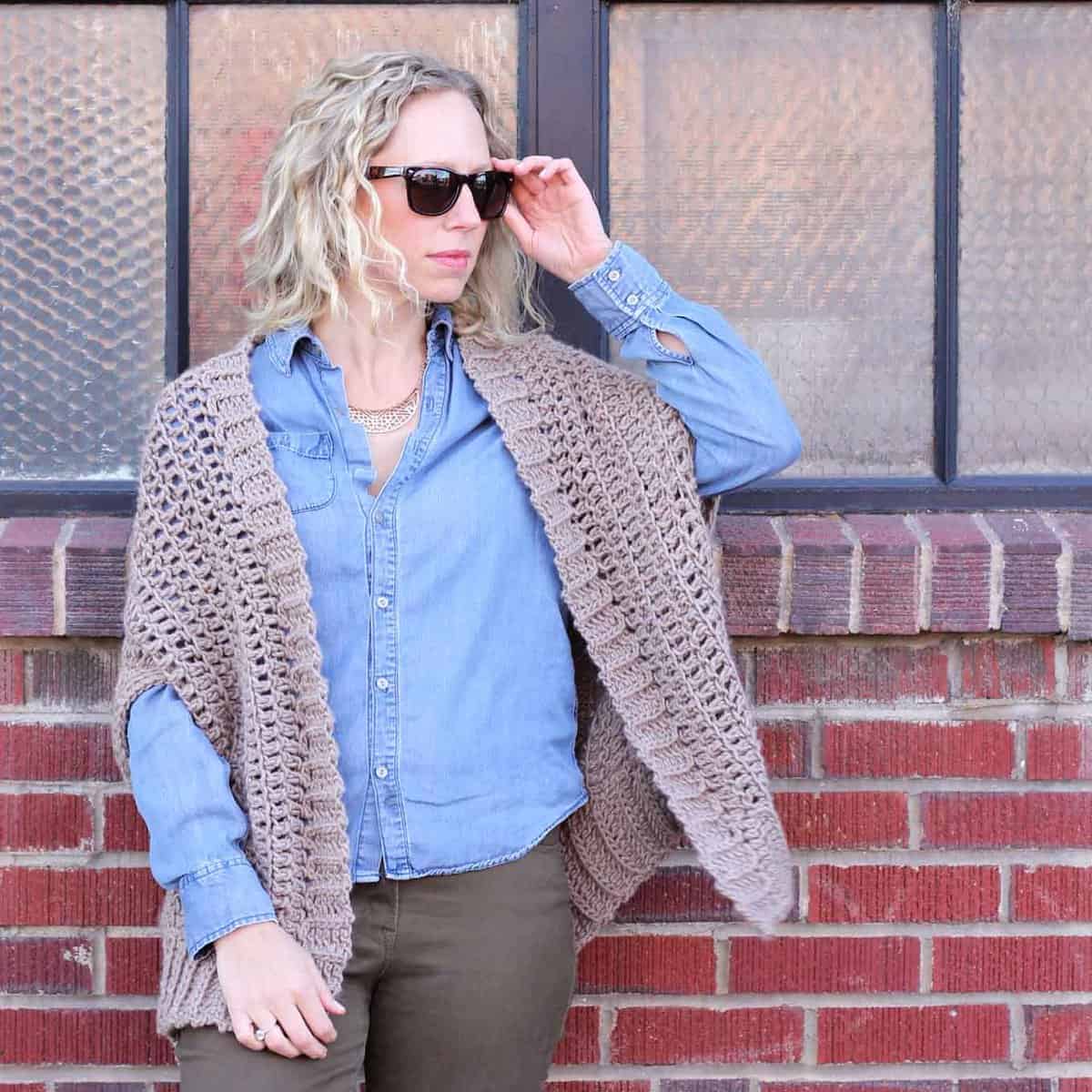
Easy Cocoon Cardigan
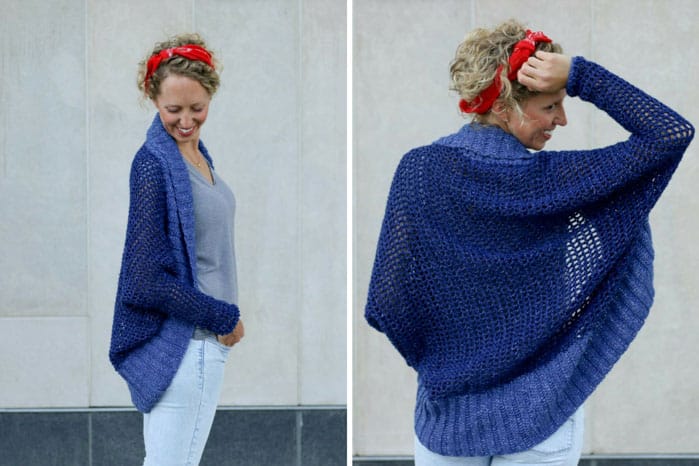
Soft Shrug with Full-Length Sleeves
Vests
Alright, while vests are not technically sweater patterns, they are essentially cardigans without sleeves. Layer a boho vest on top of your outfit for instant style points.
See all our crochet vest patterns →
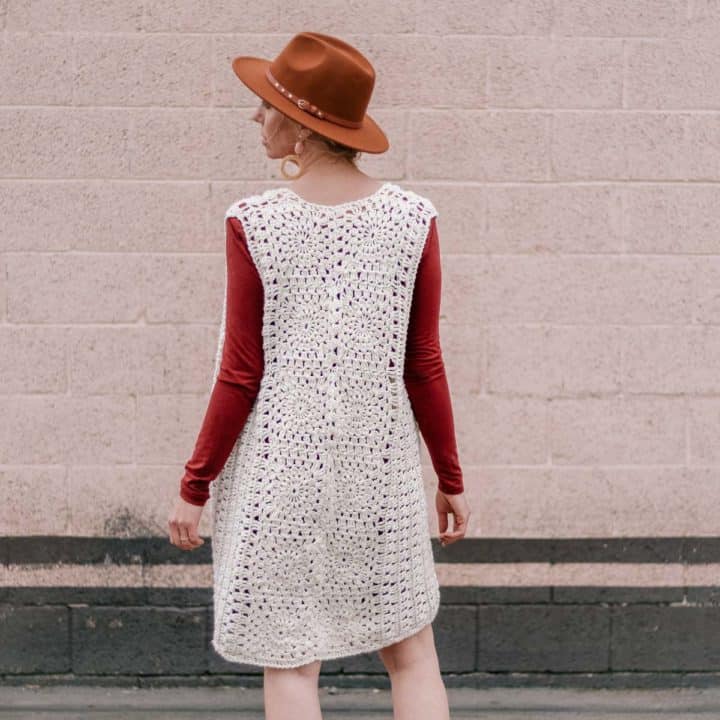
Bohemian Granny Square Vest
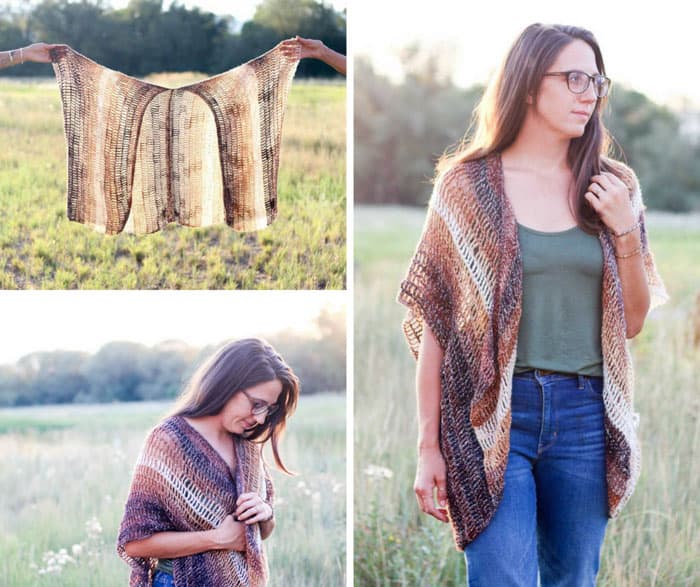
Serenity Beginner Vest Pattern
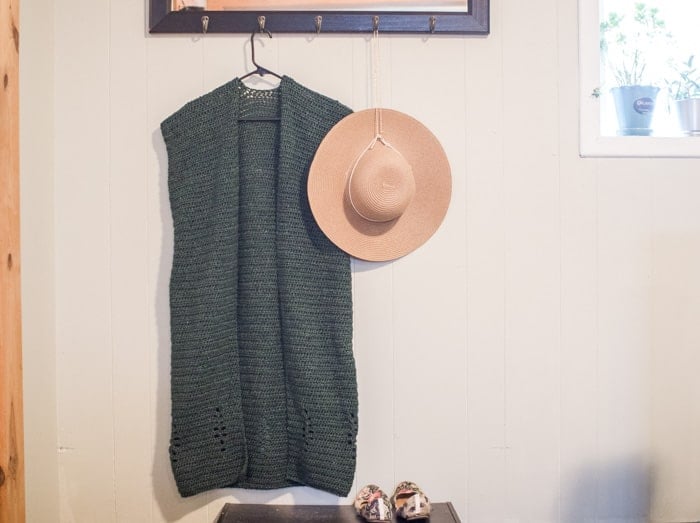
Long Tree-Lined Vest
Patterns for Kids
A kid’s sweater can often be a perfect first garment for beginners. Why? Because kids are smaller of course! Whether you’re new to crocheting garments or you’re an old pro, these sweaters for children will come together quickly using simple techniques.
See all our wearable patterns for babies, toddlers + kids →
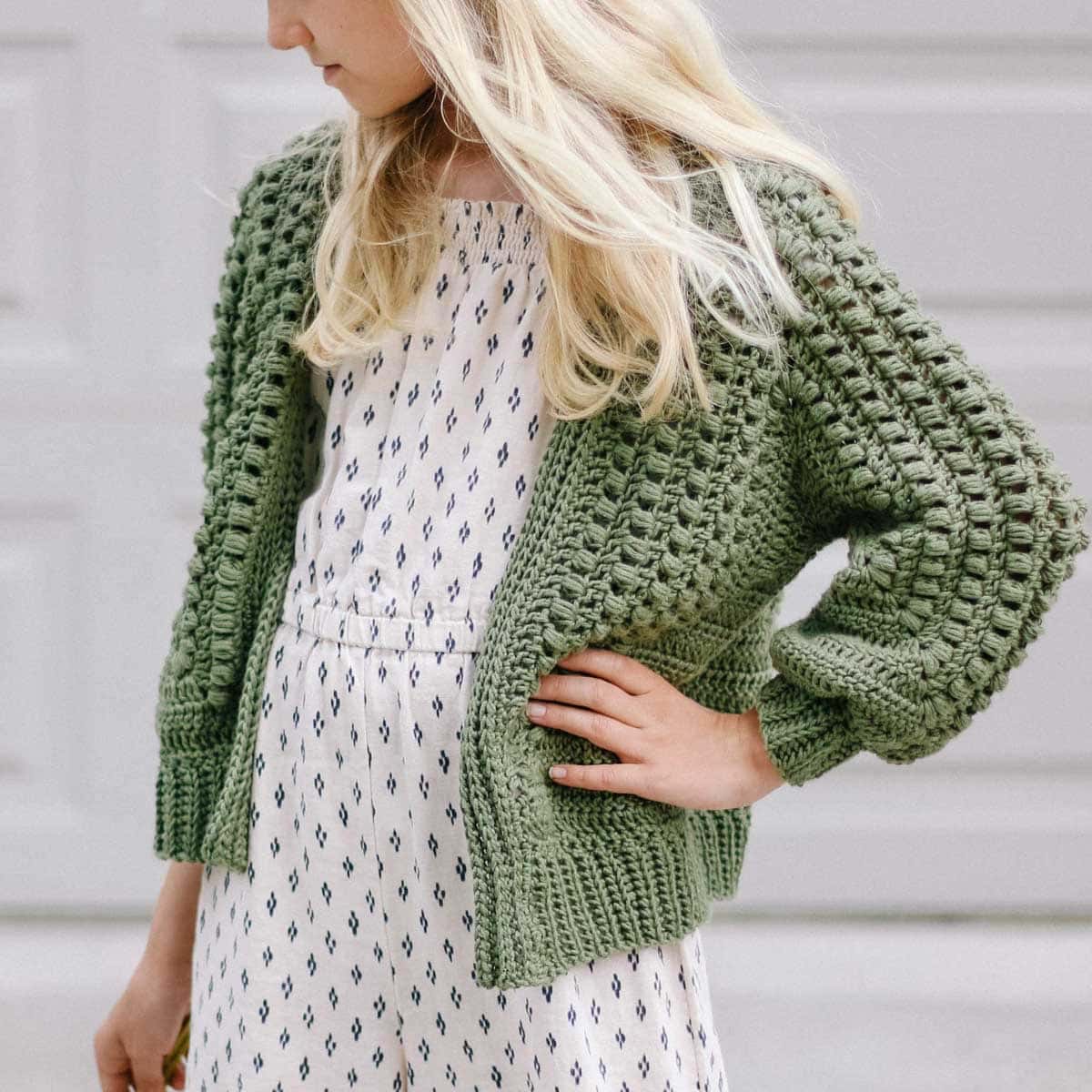
Mini Mezzo Cardigan
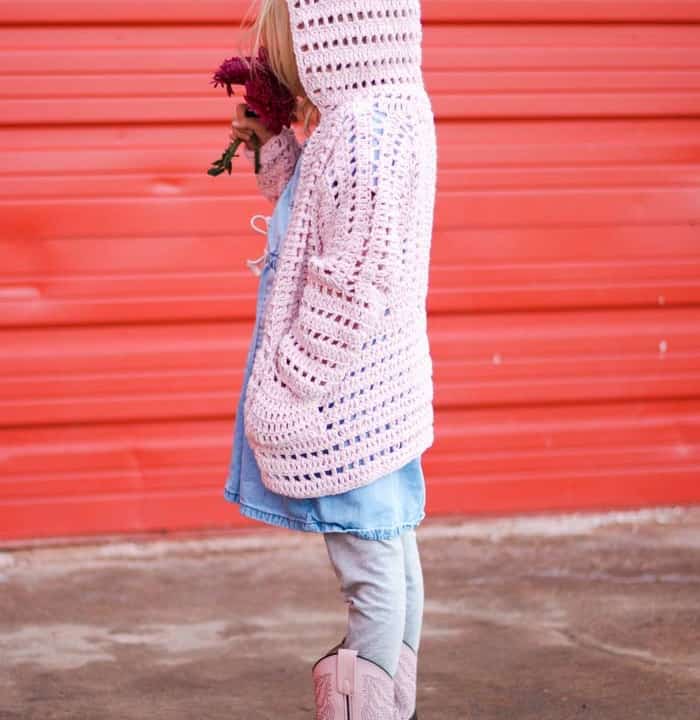
XO Little Girls Sweater Pattern
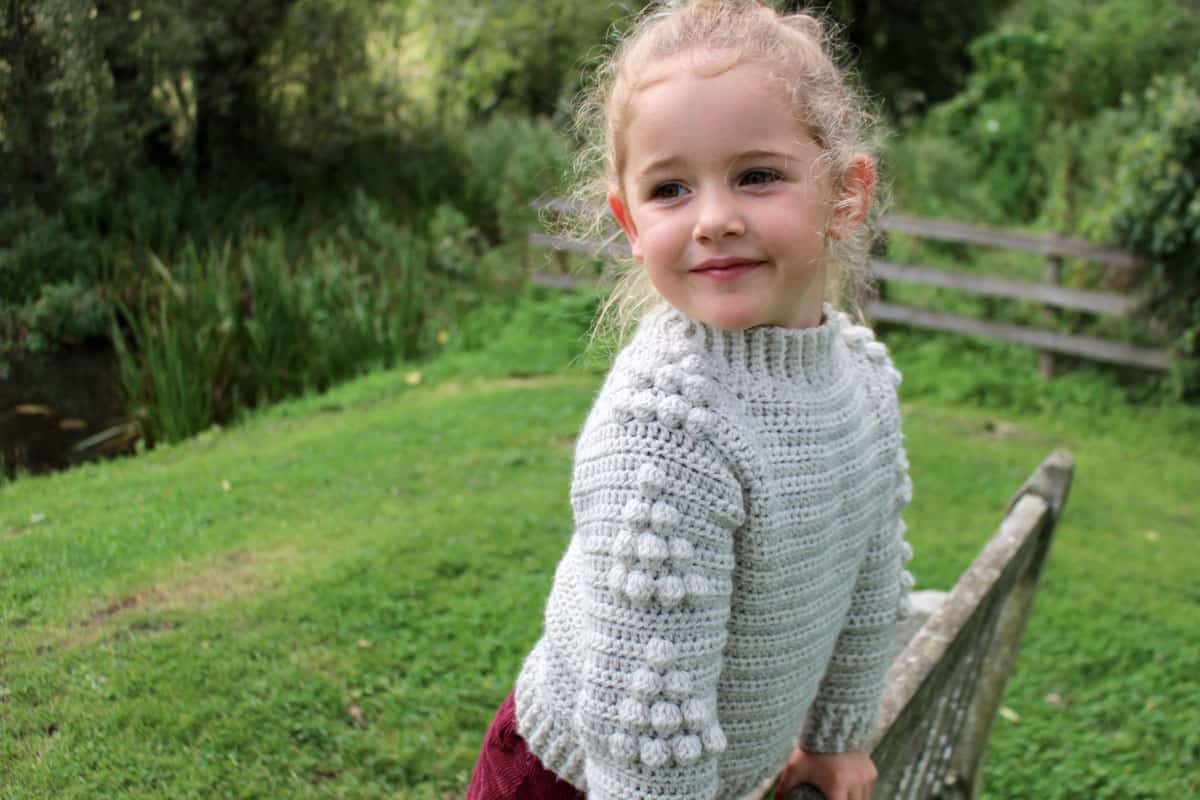
Baby Sweater with Bobble Tree Motif
Can I Crochet a Sweater as a Beginner?
Absolutely! Learning how to make a sweater is really no different from another crochet project. The first step is choosing an easy pattern that uses straightforward construction and techniques.
You’re in luck because many of the pullover and cardigan patterns above are made using basic stitches and very simple shapes, like rectangles!
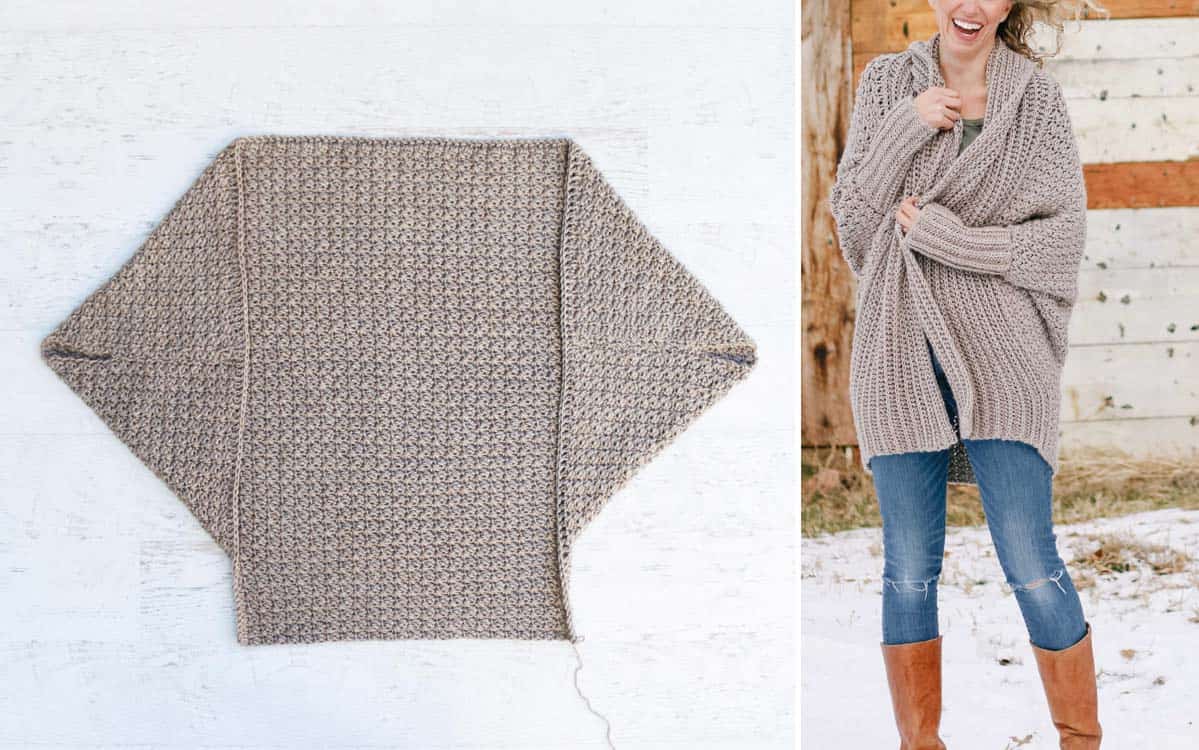
Supplies for Crochet Cardigans + Sweaters
Choosing the right supplies is critical to sweater success. Does this mean you need to break the bank on really expensive yarns and notions? Thankfully, no. Here are some things to keep in mind when gathering your supplies.
Crochet Hook(s)
When you see the hook size in a pattern, remember this: The pattern designer is telling you how they achieved the right gauge, not how you must.
We all crochet a little more tightly or loosely than the next person. It’s very personal. Changing your hook size to achieve the pattern gauge is ALWAYS okay. (See more on how to check your gauge below.)
Notions
Other than a hook and yarn, what do you need for crocheting a sweater? Just determination, an adventurous spirit, and a few notions.
Measuring tape
Use this to ensure you’ve achieved the right gauge. You might also want to measure the length of a sleeve, a hem, or something similar. You’ll use this to take your own measurements to choose the right sweater size as well.
Stitch markers
Stitch markers usually look like little plastic safety pins. They are important for helping you keep your place in the stitches and knowing when to repeat decreases.
PRO TIP: In a particularly long row, you can mark every 10-20 stitches, for example. This way, you can more easily count your stitches if you get lost.
Tapestry needle
Yarn needles are essential for weaving the yarn tails into the sweater and sometimes, for joining pieces together.
Scissors
For fastening off yarn at the end of a pattern section.
Highlighter or pen
This is the easiest way to keep track of your one size within a crochet pattern with many size options. I always like to highlight all numbers and stitch counts for my size in the pattern before I get started.
Essential Tips for Sweater Success
Here are some tips to keep in mind as you get started on your next sweater.
1. Choose a pattern at the right skill level (that’ll keep you interested).
Most of the trendy sweaters above are quite easy. So, choosing the right pattern comes down to what you value in a project.
- In a hurry? Make a sweater with chunky yarn. Category 4, 5, and sometimes 6 can work well.
- Hate seaming? Try a hexagon-based pattern.
- Love to crochet on the go? Granny square sweaters and patchwork cardigans can be made in pieces, which makes them more portable projects.
2. Pick the right yarn.
Review the tips above for choosing the best yarn for your specific project. While crochet blanket patterns can sometimes be made with a different yarn weight, when making a sweater or cardigan, you must choose a yarn that’s the same weight as the pattern recommends.
Otherwise, your project could be way too big or way too small.
3. If nothing else, make a gauge swatch.
Meeting the pattern gauge is what ensures your cardigan has the measurements listed in the pattern. It’s always okay to use a different size hook from what the pattern recommends to achieve the gauge listed.
4. Take your body measurements.
Use these numbers to guide what pattern size you choose to make.
5. Check the fit along the way.
Most sweaters can be adjusted to fit your particular body better. If you want to be able to actually try on the garment as you crochet, try a hexagon cardigan or cocoon-style sweater.
6. Block your project.
Blocking is the act of adding water or steam to crochet fabric to help the stitches relax and lie more evenly. It’s a game changer! Don’t skip this step. Check out this guide to learn all about blocking crochet projects.
Blocking Tools
If you’ve never made a sweater, you may not know what blocking is. (No judgement here – I avoided it for 27 years before finally adding this step to my garment-making process!) It just means steaming out your garment or its final pieces at the end to even out stitches and ensure the final size is correct.
Ideally you will use a blocking board or large piece of stiff foam, and t-pins to secure the pieces. You can use an actual steamer to create the moisture for blocking, or an iron with steam function can work too. NEVER touch the steamer or iron to the actual yarn. When using acrylic yarn, direct contact with the heat source can burn or melt the yarn.
If you can’t steam, you can just pin the sweater pieces down and wet them well with a simple spray bottle.
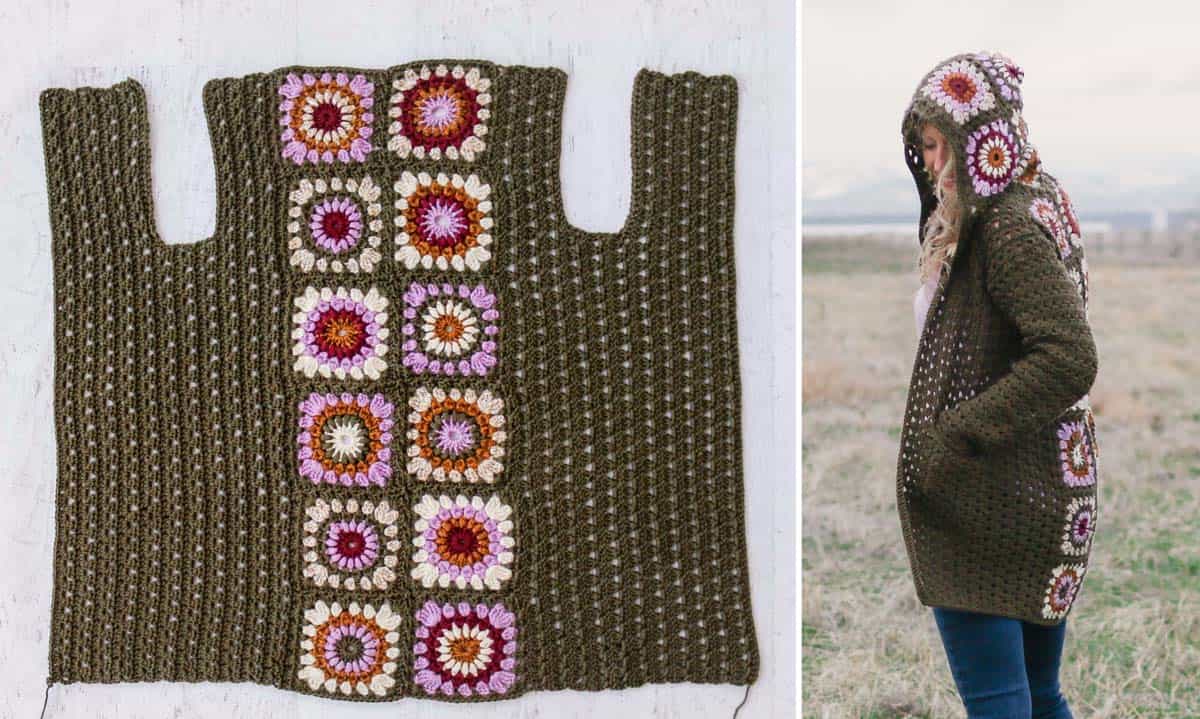
Pro Tip: Always consider the fiber type when choosing a sweater blocking method. Some yarn fibers respond better to wet blocking, steam blocking or other techniques. If in doubt, do a simple Google search to determine the best blocking method for your fiber type.
Now that you’ve learned everything you need to know about crocheting your first sweater, grab your hook and go make something beautiful!
That was so fun! Now what?
Invitation to our Facebook group
Come discuss crocheting sweaters and lots of other yarn-y projects and techniques in our Make & Do Crew Facebook group. Here, thousands of helpful crocheters answer each other’s questions and share their stitches. Join us!

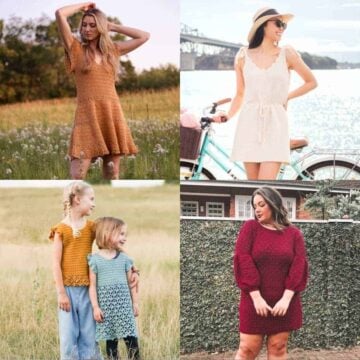
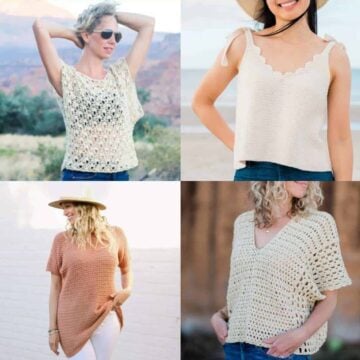

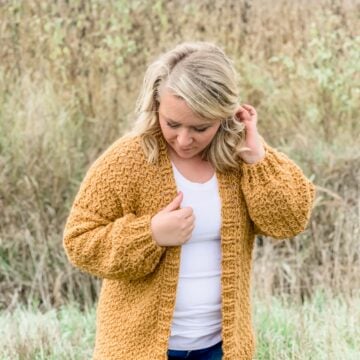
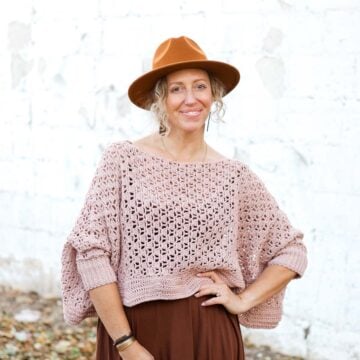
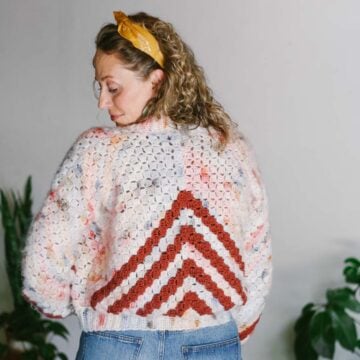
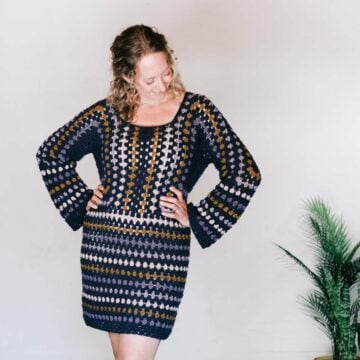
Jennie Pete says
Thanks for all the patterns. You are a wonderful person to give such priceless gifts to us. God bless you greatly.
Lorraine says
I love your patterns. However, I would like some more patterns that are more fitted. I am getting tired of the loose fitting sweaters. I know more fitted sweaters might be more difficult to learn how to crochet, but would love to learn how to size them, etc. Do you have any patterns like that?
Jess Coppom says
Hey Lorraine,
Thanks for that feedback. I do tend to design more loose, oversized crochet sweaters, both because they can be easier to crochet and they’re comfy to wear. I’ll keep your request in mind though as I dream up more patterns. 🙂
Jess
Margaret-Rose Stringer says
I’ve bought your brunch hexagon pattern, and am now awaiting the eggplant chenille yarn from Lion Brand.
This is going to be a fun project, or I’m a dutchman ! [grin]
Anna Smith says
I totally love your patterns. I want to make my sister a cardigan. Her size is 2x and I was looking at the crochet cardigan #16. Does it come in that size to make? Do you recommend a cardigan? She lives in Virginia where they get a lot of snow. Thank you for your help.
Anna
Sadaf sabahat. says
You have paterns for baby dress or sweater for baby boy and girl please all your designs are lovely.
Pamela Cuvelier says
I need a sweater and saw #11 but I can’t make it since I don’t have the pattern. Please give them to me, or tell me how I can get it.
Melaine Mero says
I need advice on the Dwell sweater.. I am using Lions Pride wool spun yarn. It’s a bulky 5 weight yarn. My test gauge swatch stitch and row count were correct. I have made the correct amount of rows and stitches and my rectangle is about 9 inches short on length and width both. My only guess is I crochet too tight? Can I save this by adding more rows and making another rectangle to add to the sides? Or add more rows to the collar and sleeves Or just frog the whole thing and start over with a larger hook and looser hand? I gotta have this sweater before spring and the yarn was my Christmas gift.
Jess @ Make and Do Crew says
Hey Melanie,
I’m sorry to hear you’re having trouble. My suggestion would be to pin the sides where you’d work the seam of the rectangle and try it on as is. If you feel like the drape works okay, you can definitly just add some extra collar rows to add some more fabric to the sweater overall. Similarly, you can just add extra rounds to make the sleeves longer too. These additions may require a bit more yarn.
If you try on the rectangle and don’t like the fit, then I’d suggest tearing it out, unfortunately. (I really hope that’s not the case!)
Hope that helps!
jess
Mary J. Longie says
Hi, I luv your patterns.. I have made most of them. I can’t afford them in stores to buy, luv, luv,luv making them. Thank u so much
Charlene Kimbrell says
I purchased the pdf for #1 and have made several. One is a Christmas gift and two were made for a sweet woman referred to me on Facebook who furnished the yarn and paid me for labor. It is one of my all time favorite patterns.
Judie Kilbourne says
How do I get the written pattern for the item that I have saved.
Robin says
Thanks! I made #6 months ago. # 1 is on my “you better hurry up and start!” list. I’m making it for my son’s GF for Christmas. I def wanna make #2 & #4 on the Make &Do Crew list as well.
Maria says
Bellissimi,,, grazie! Un bacio da Roma 🙂